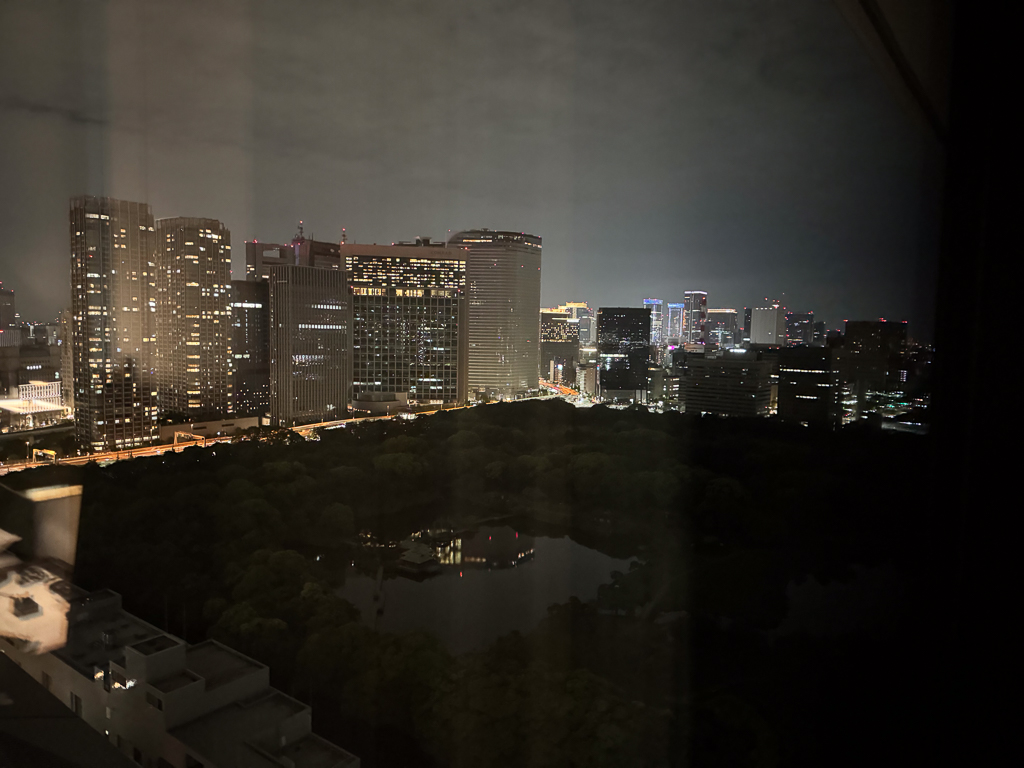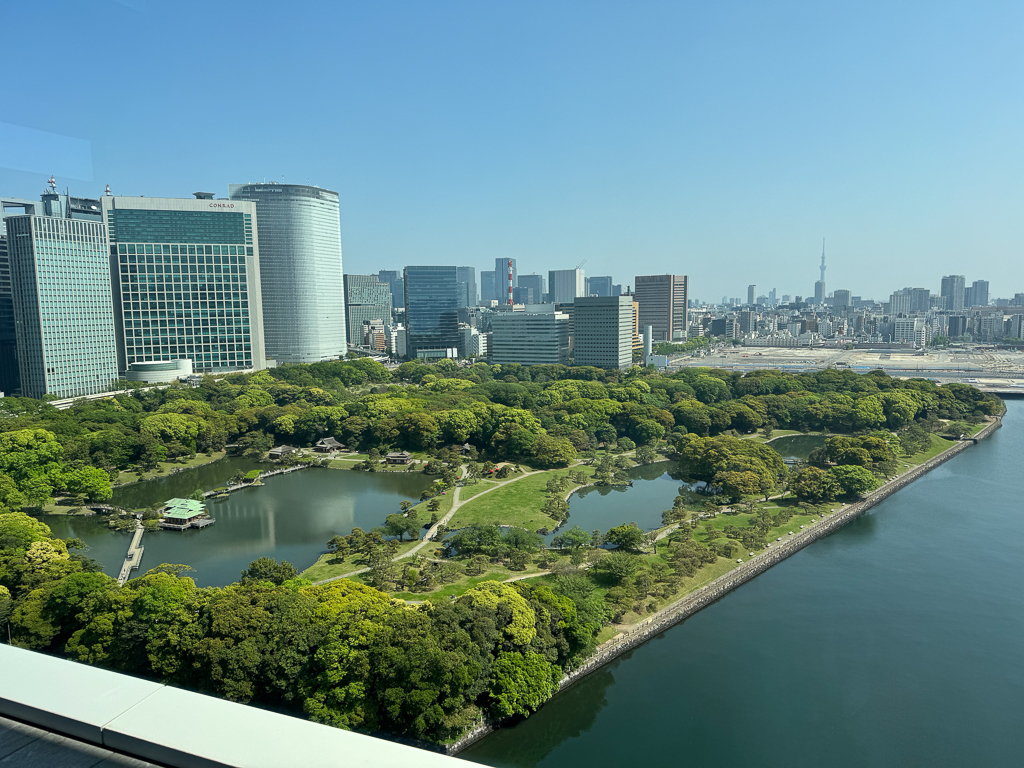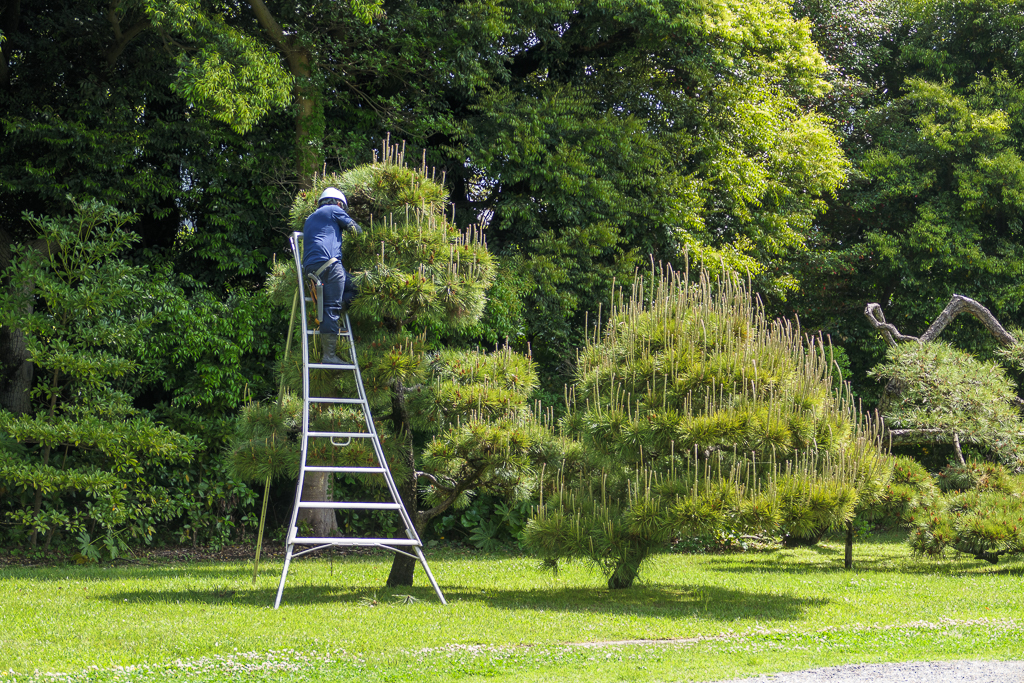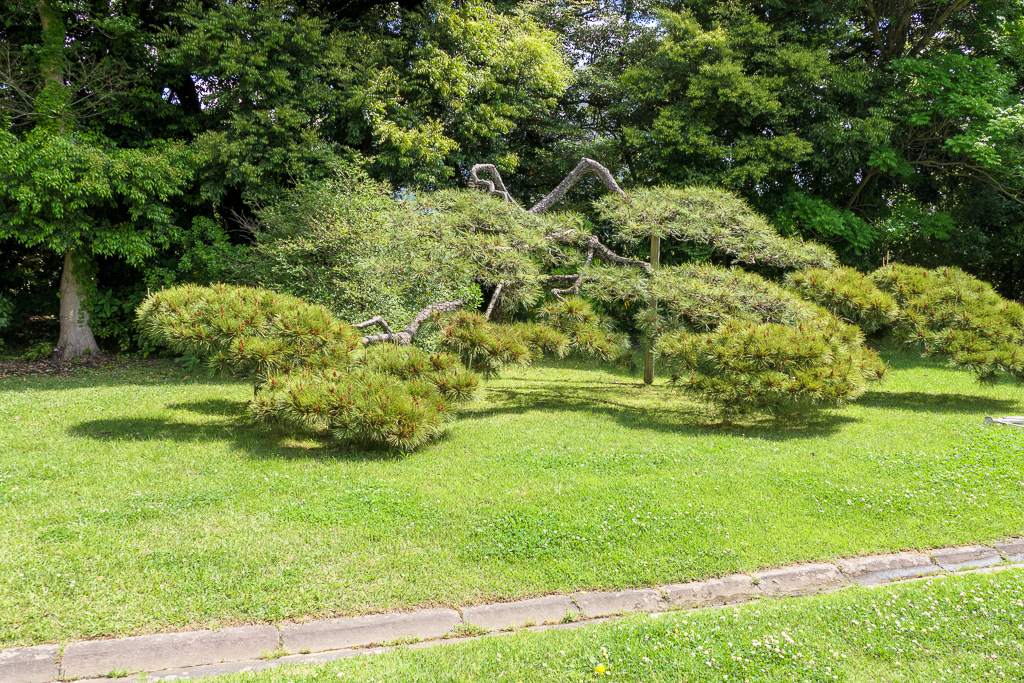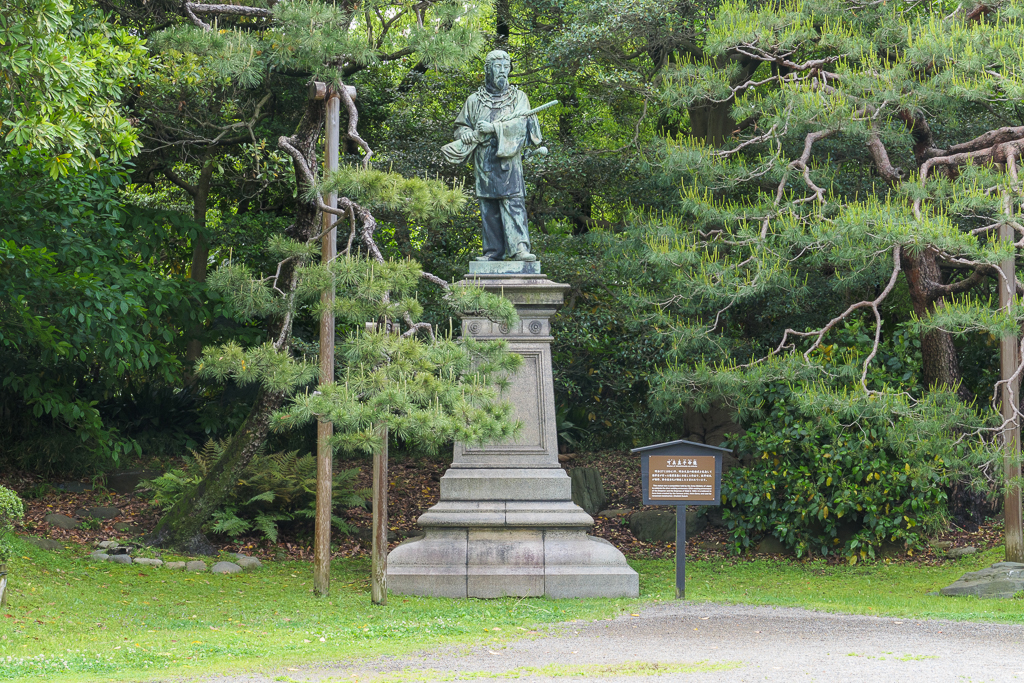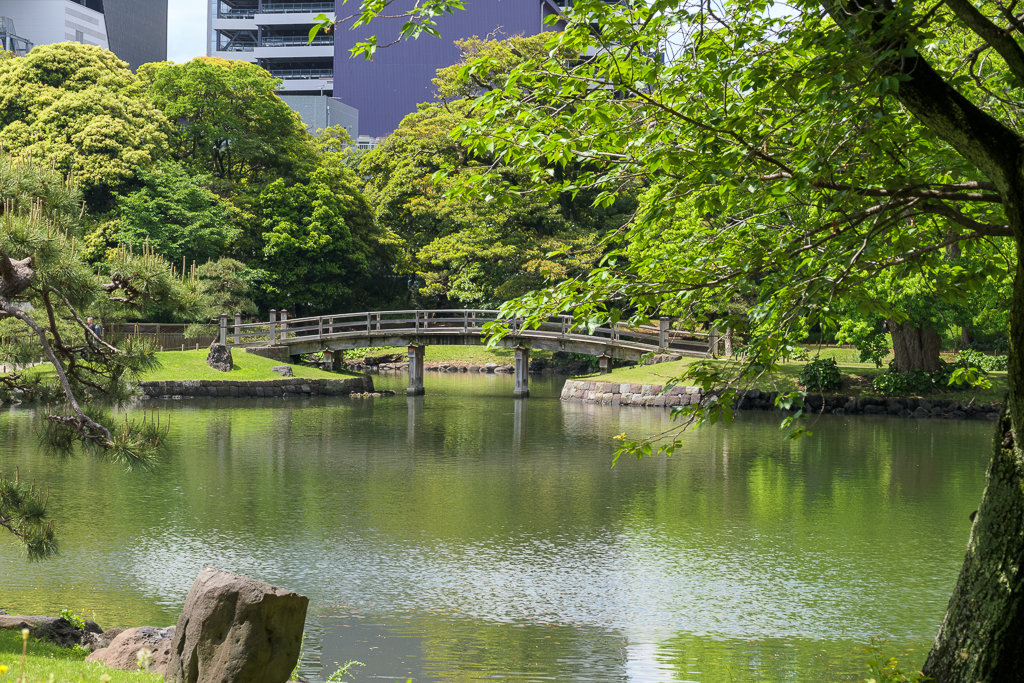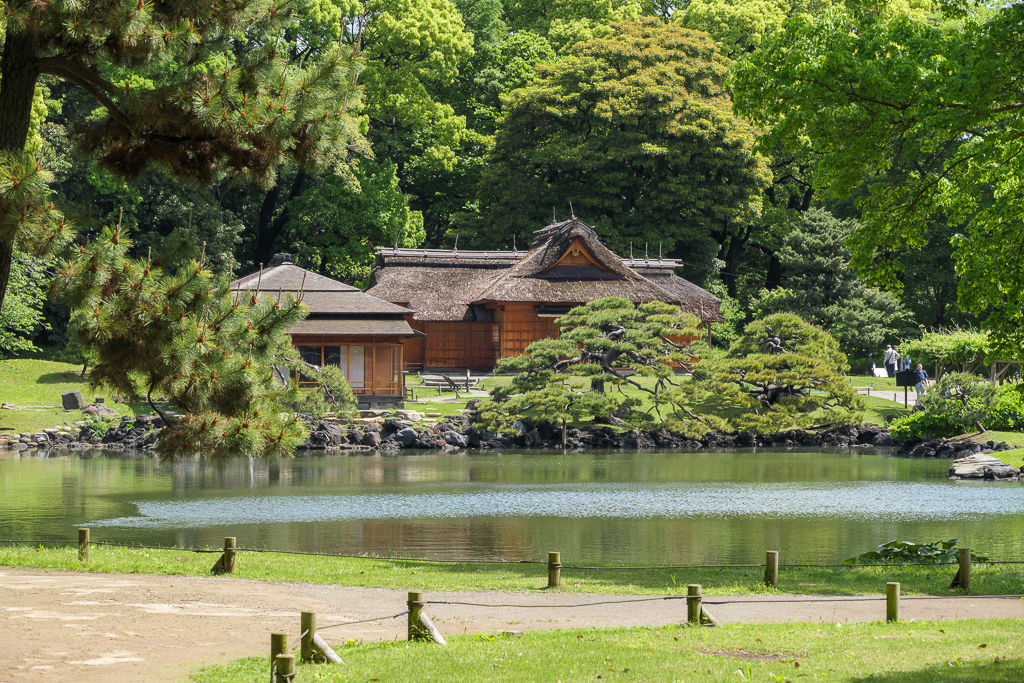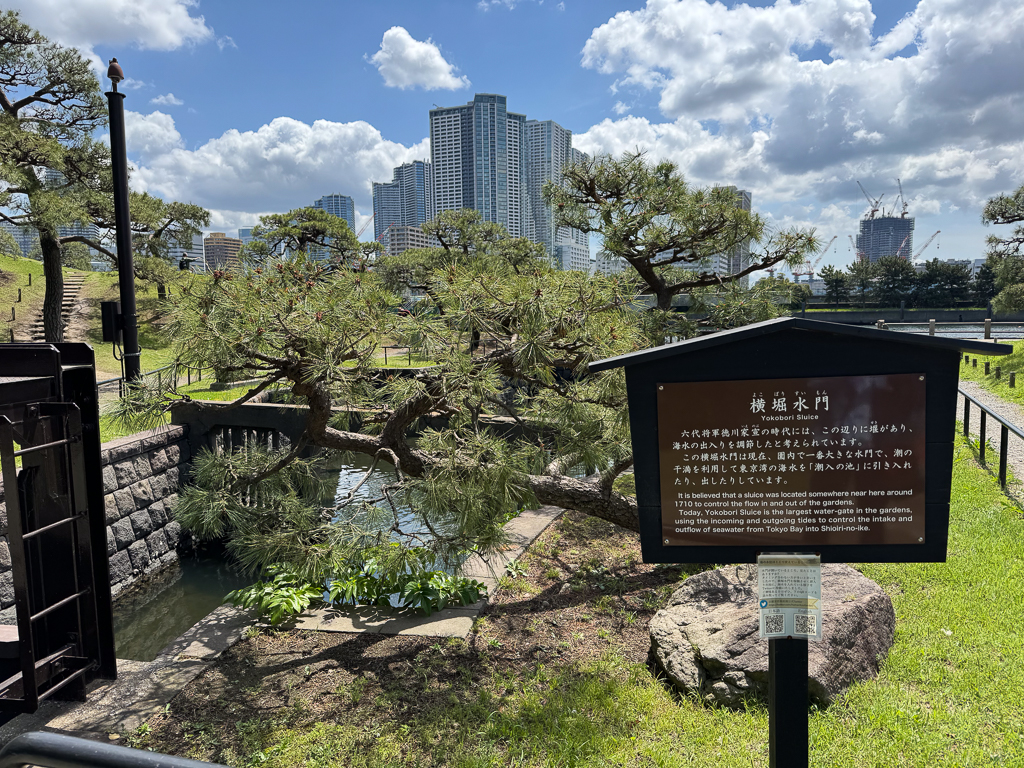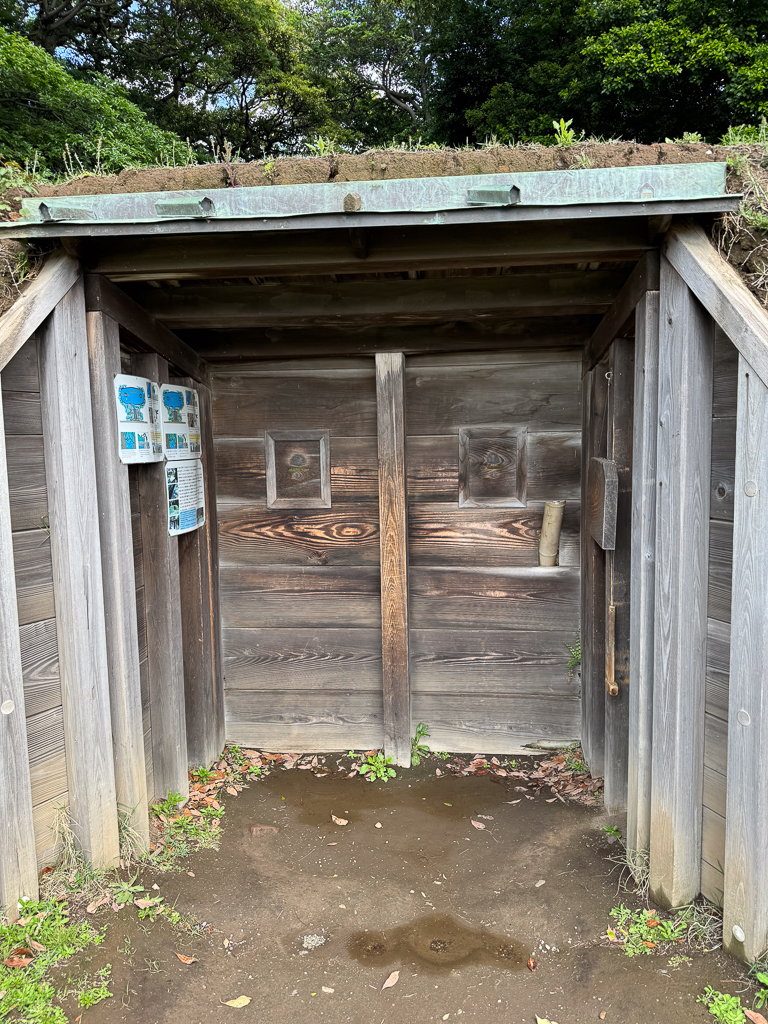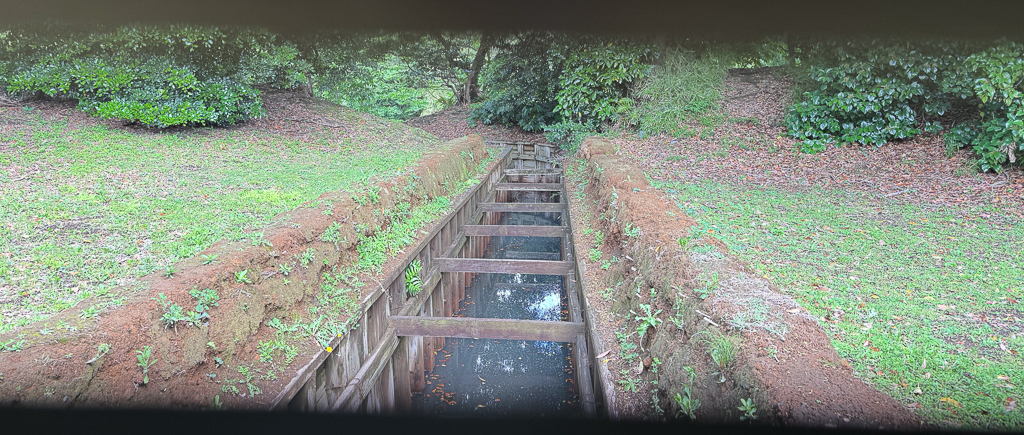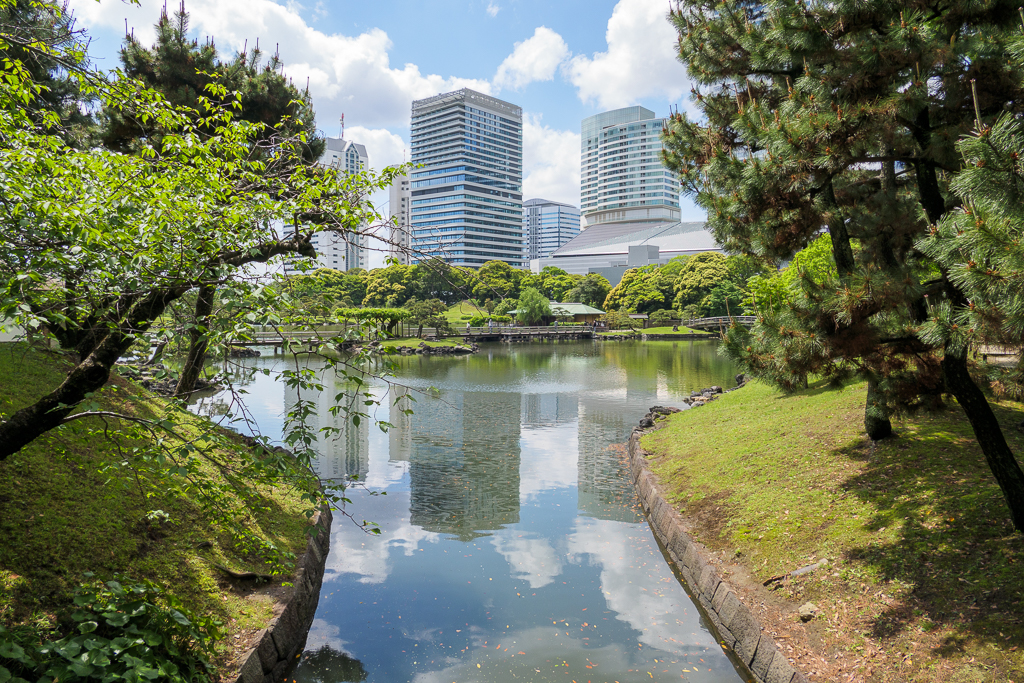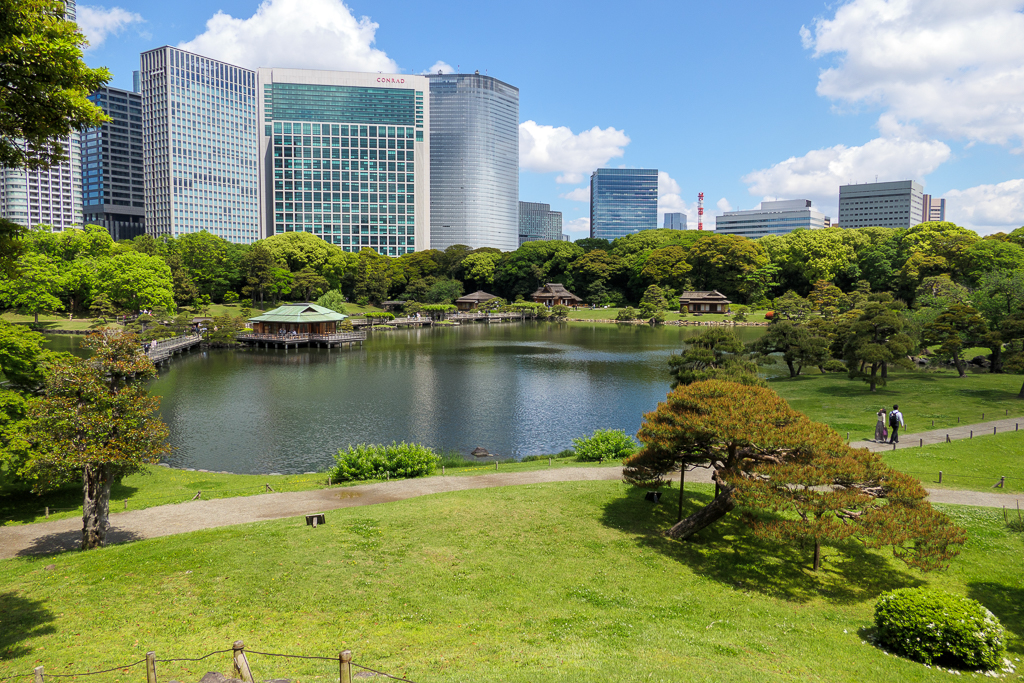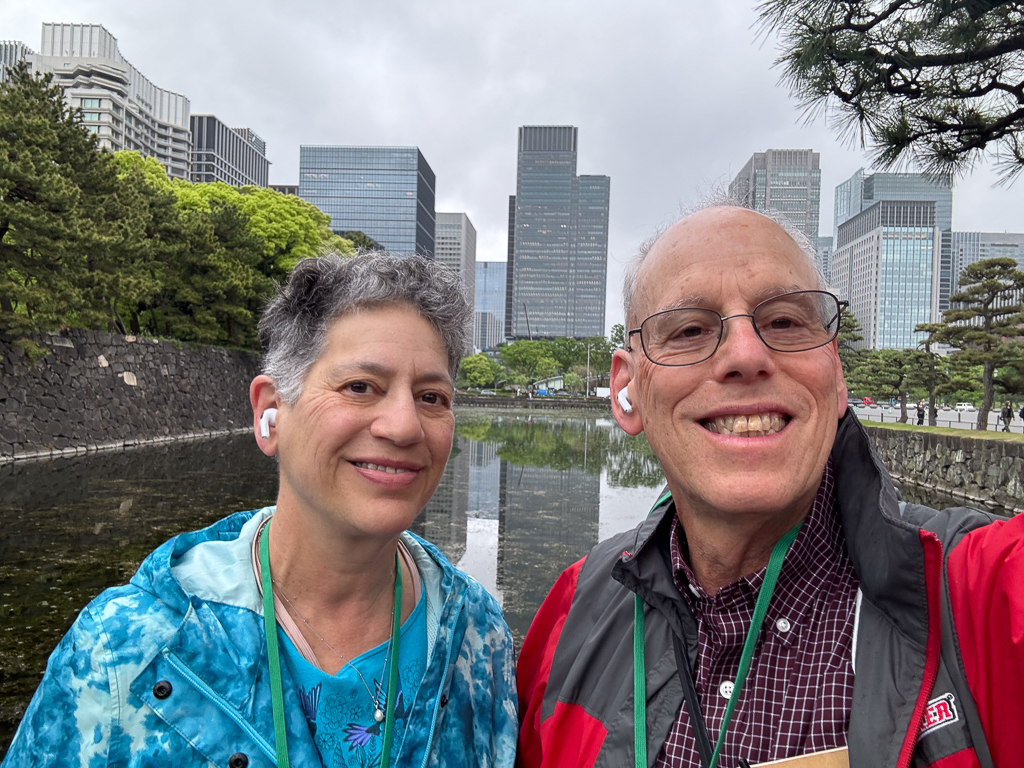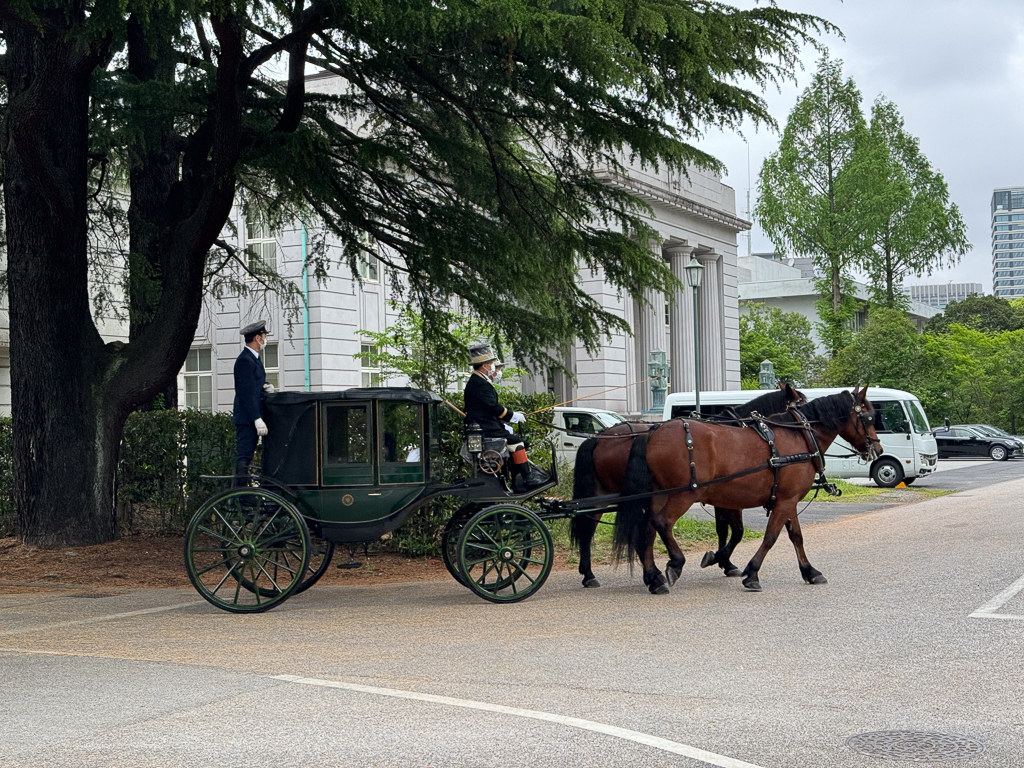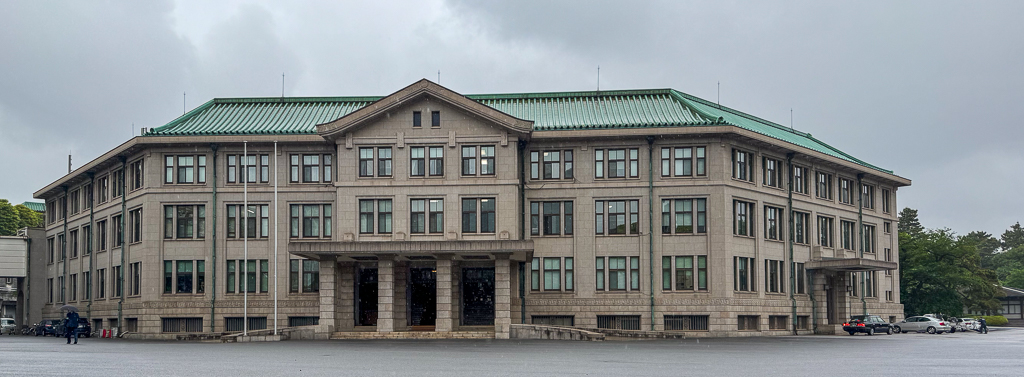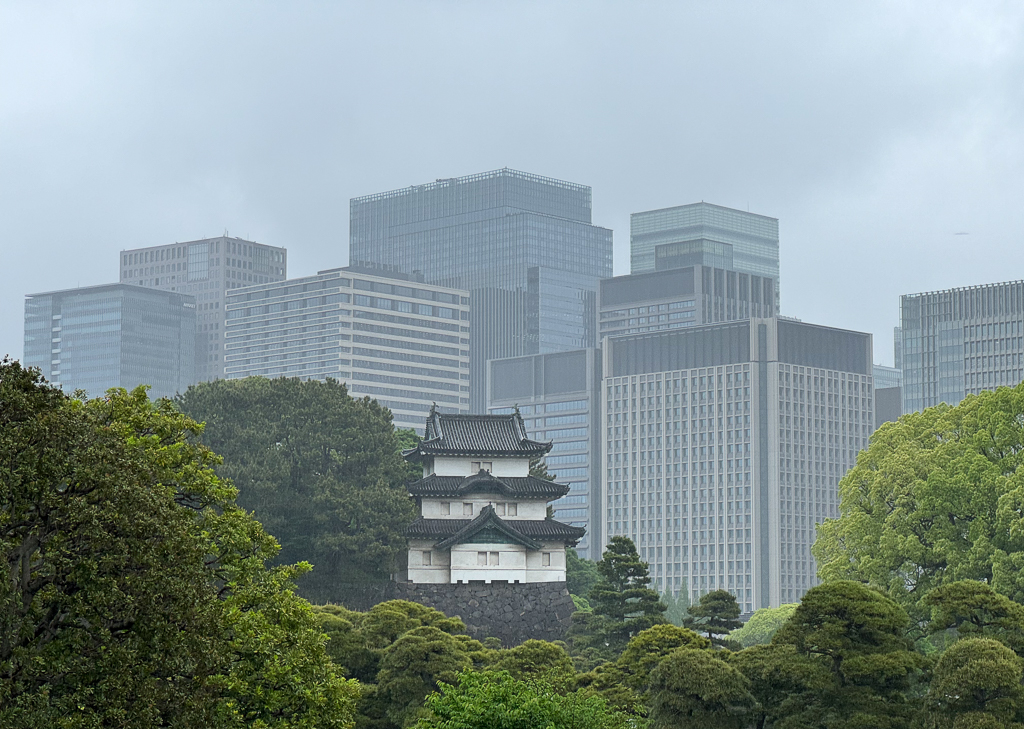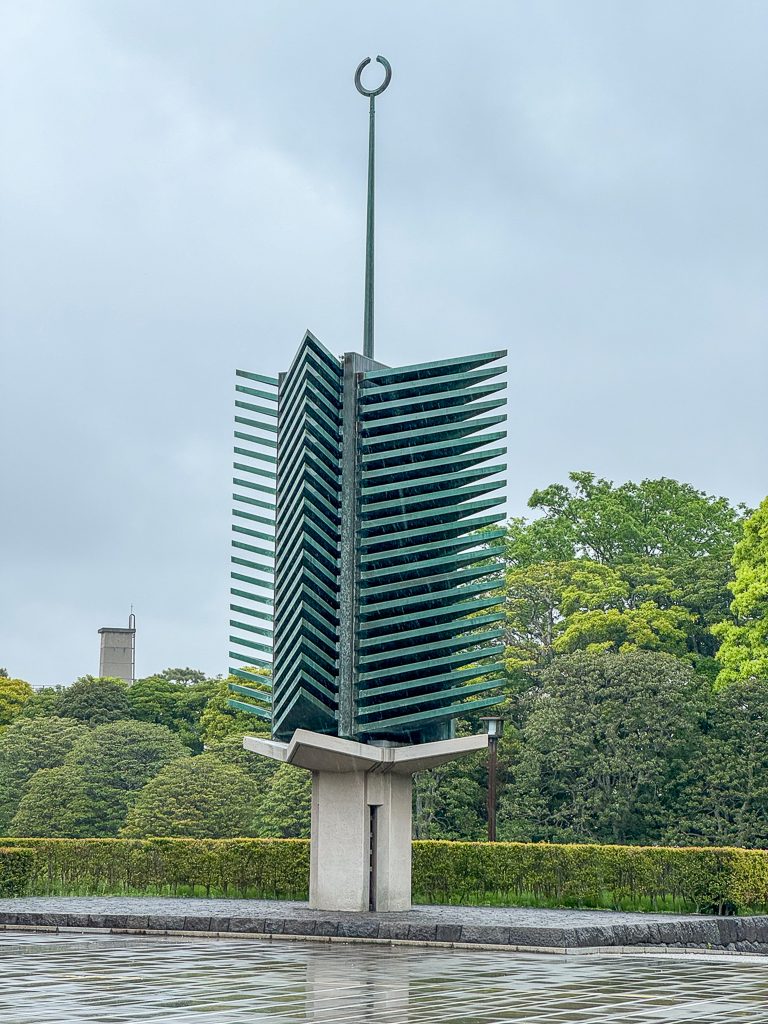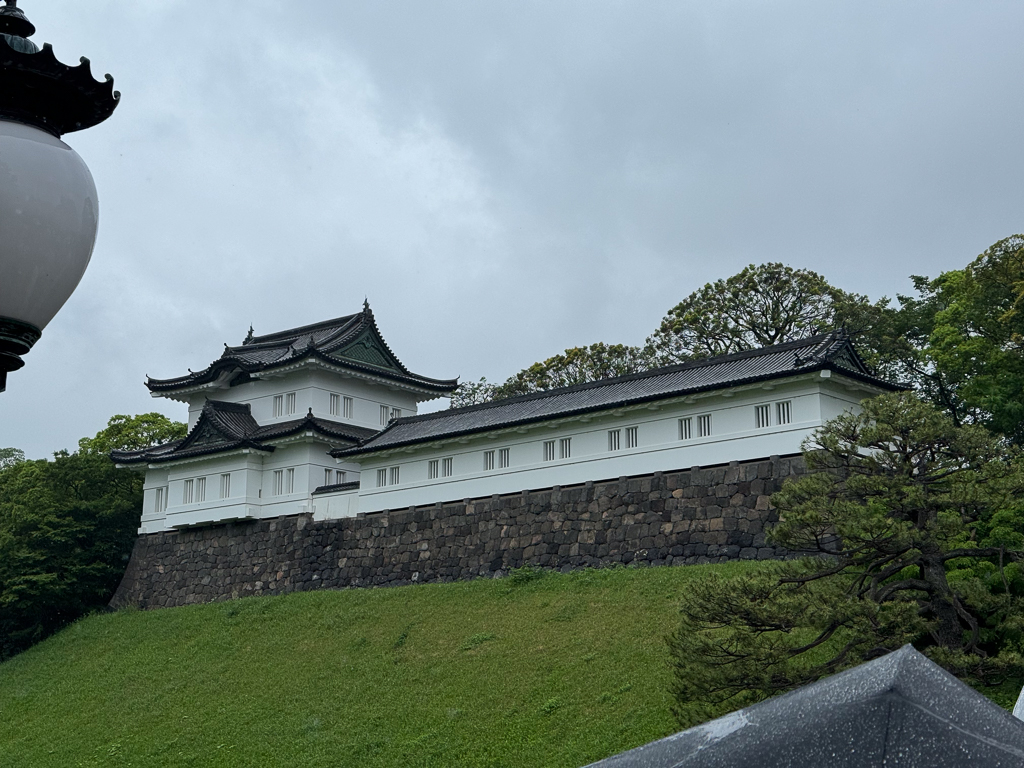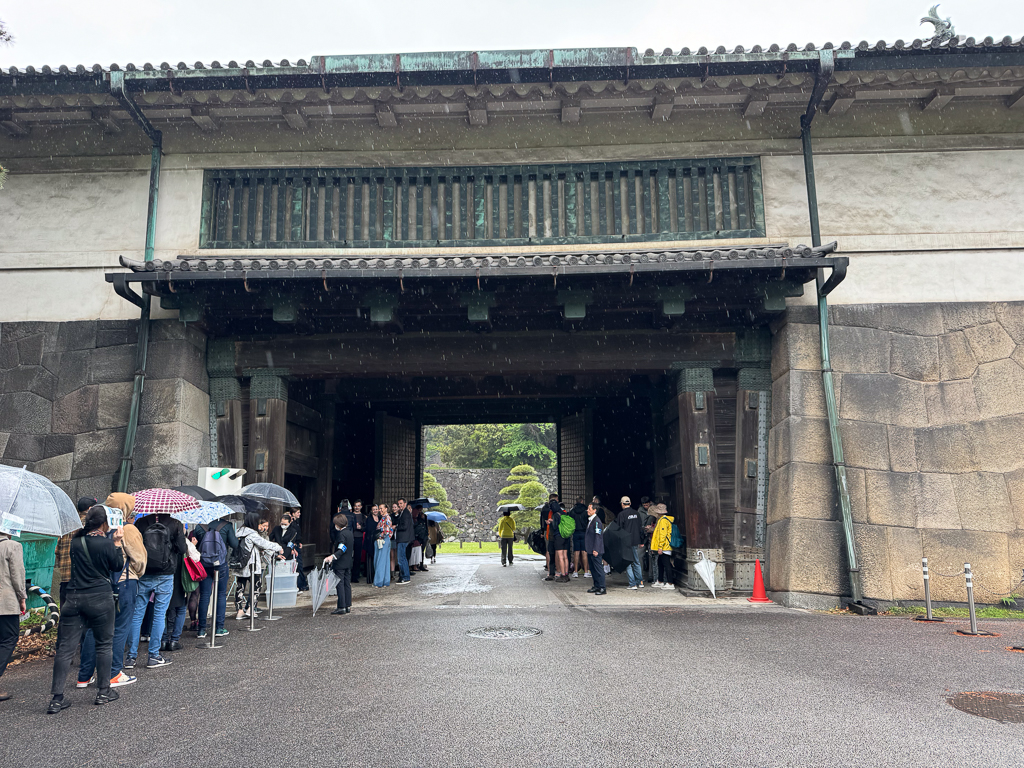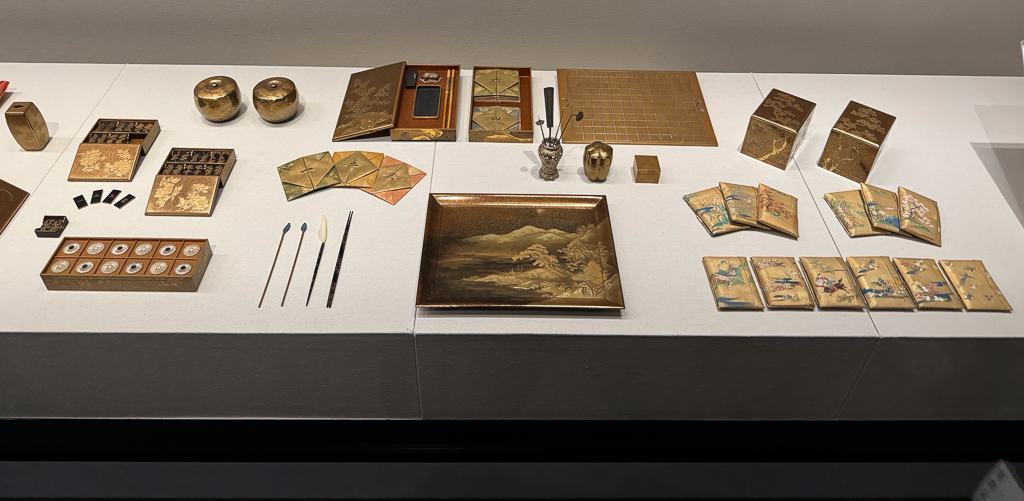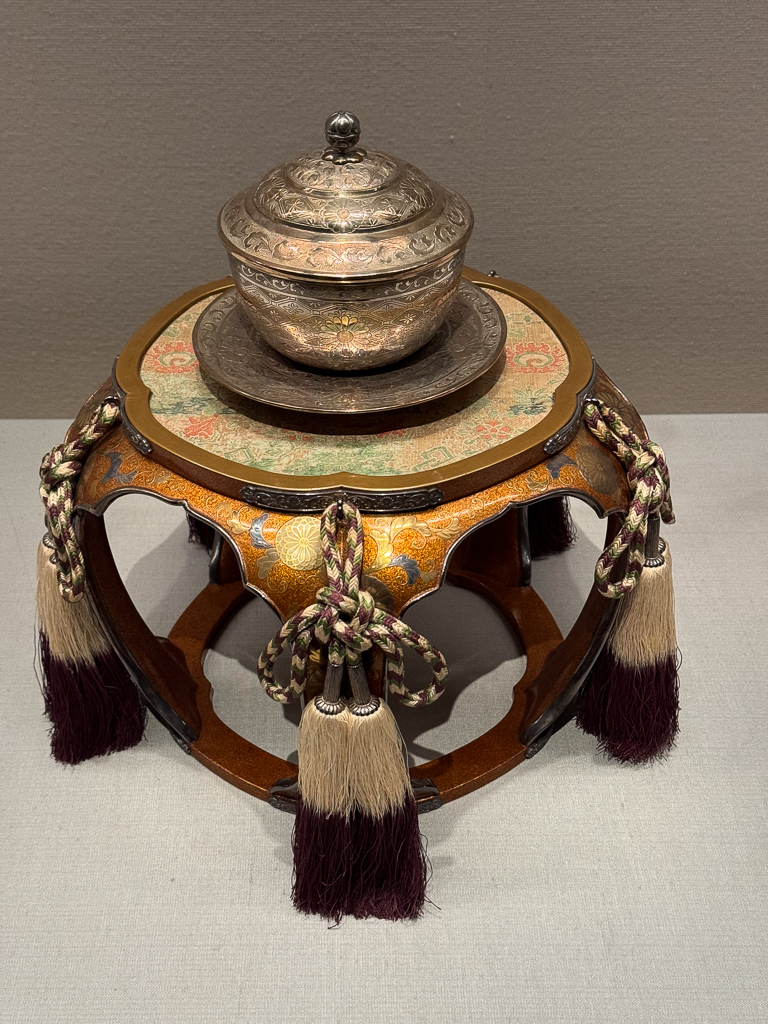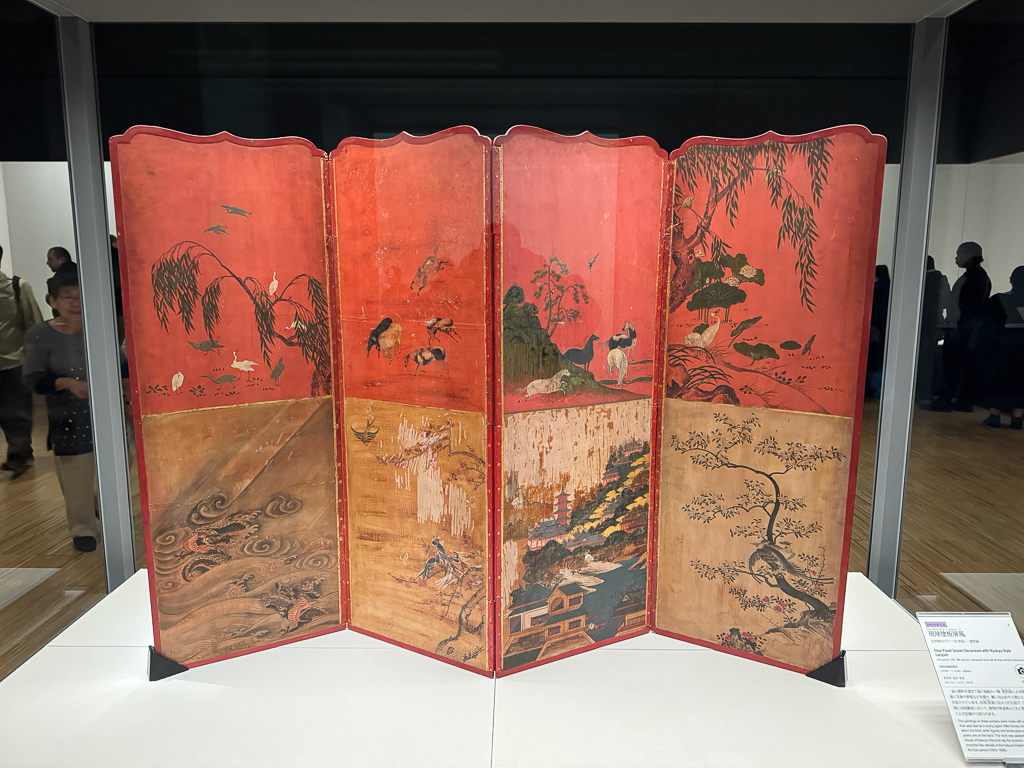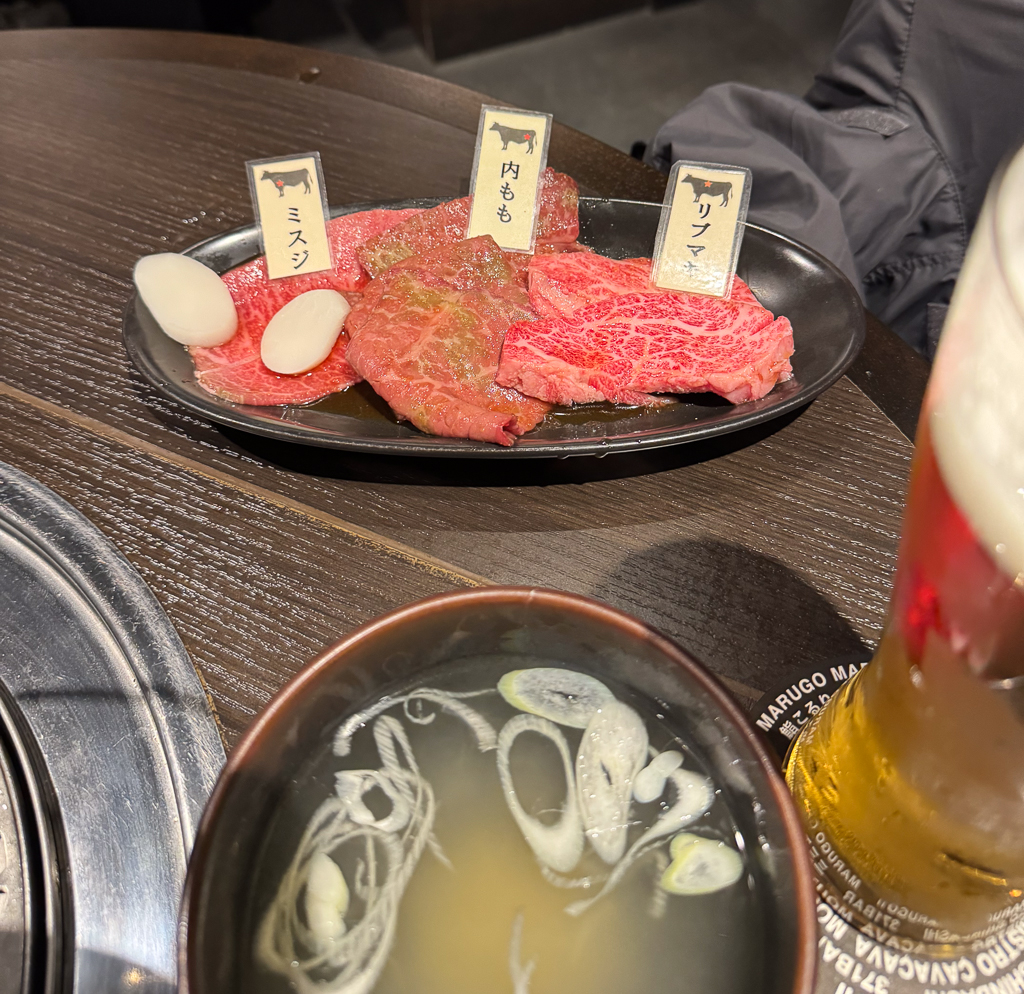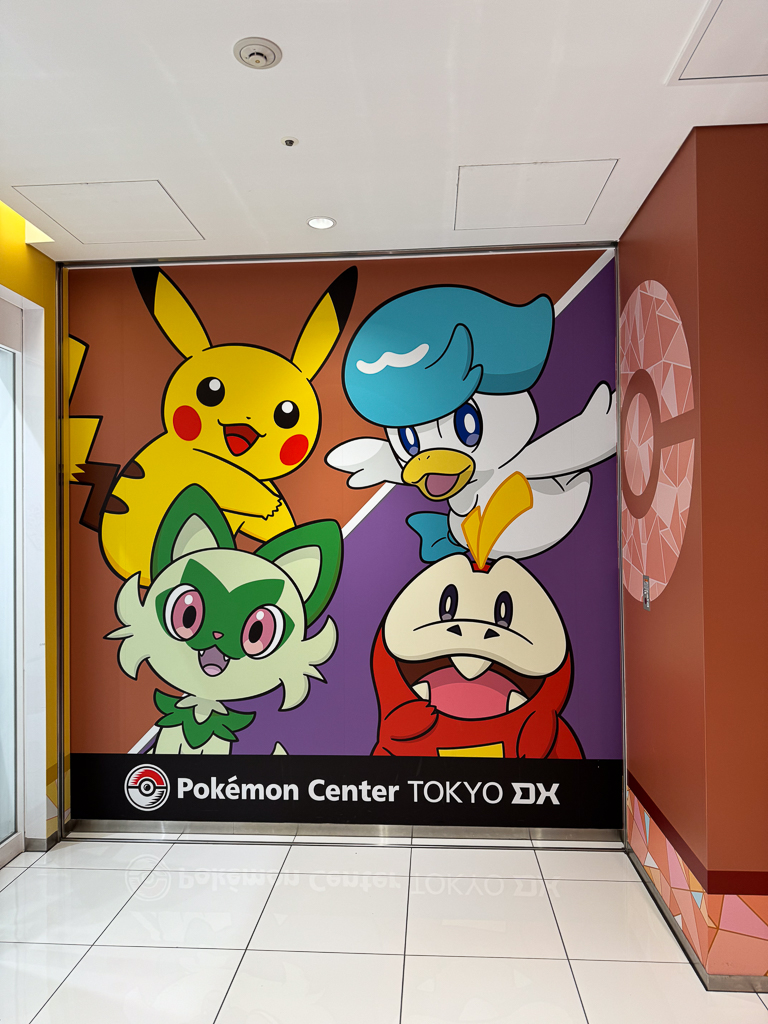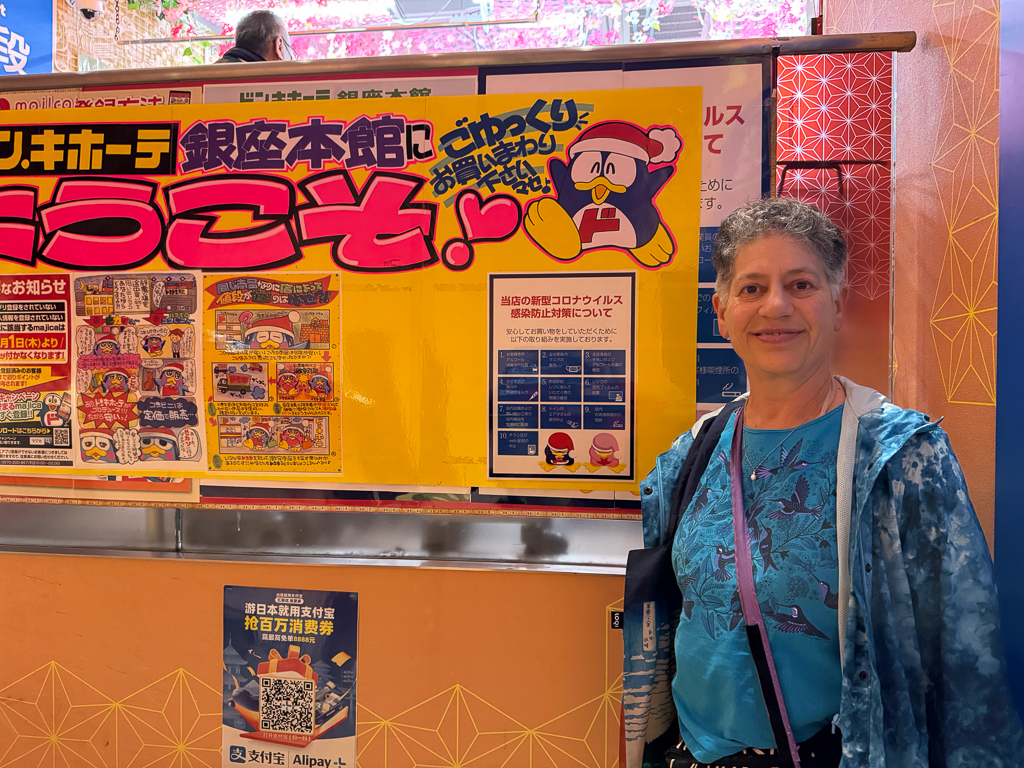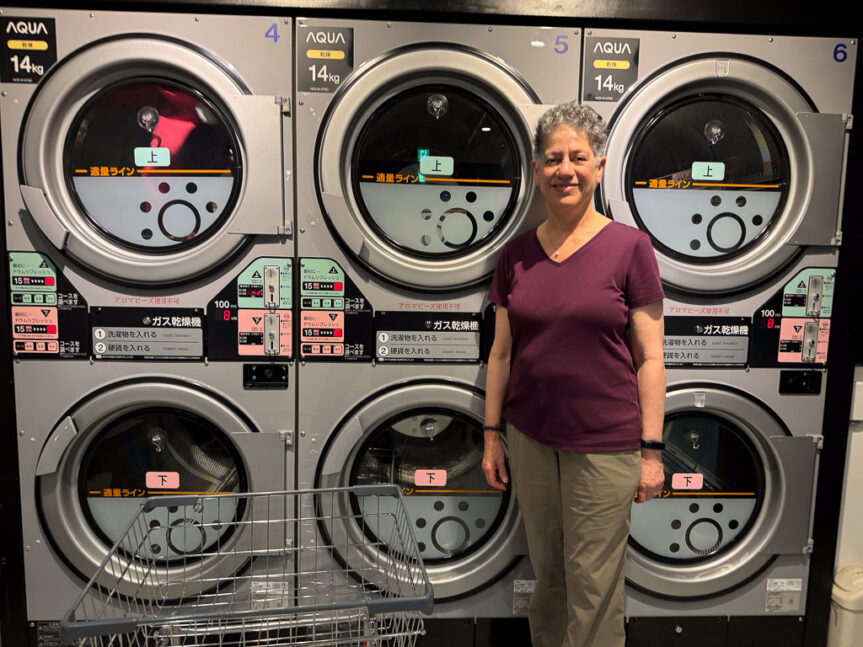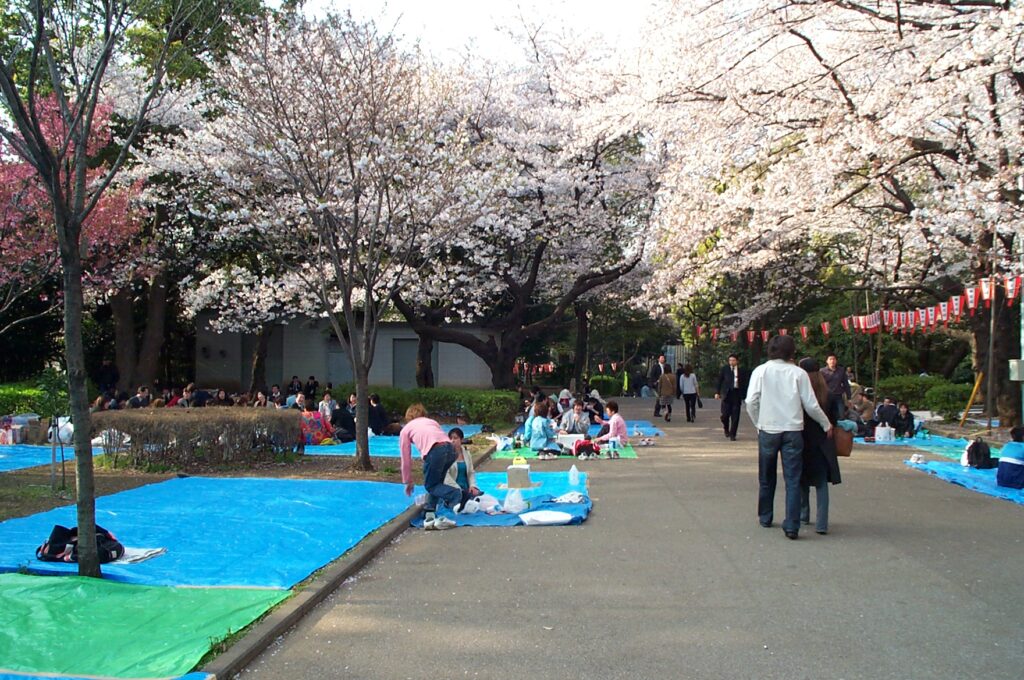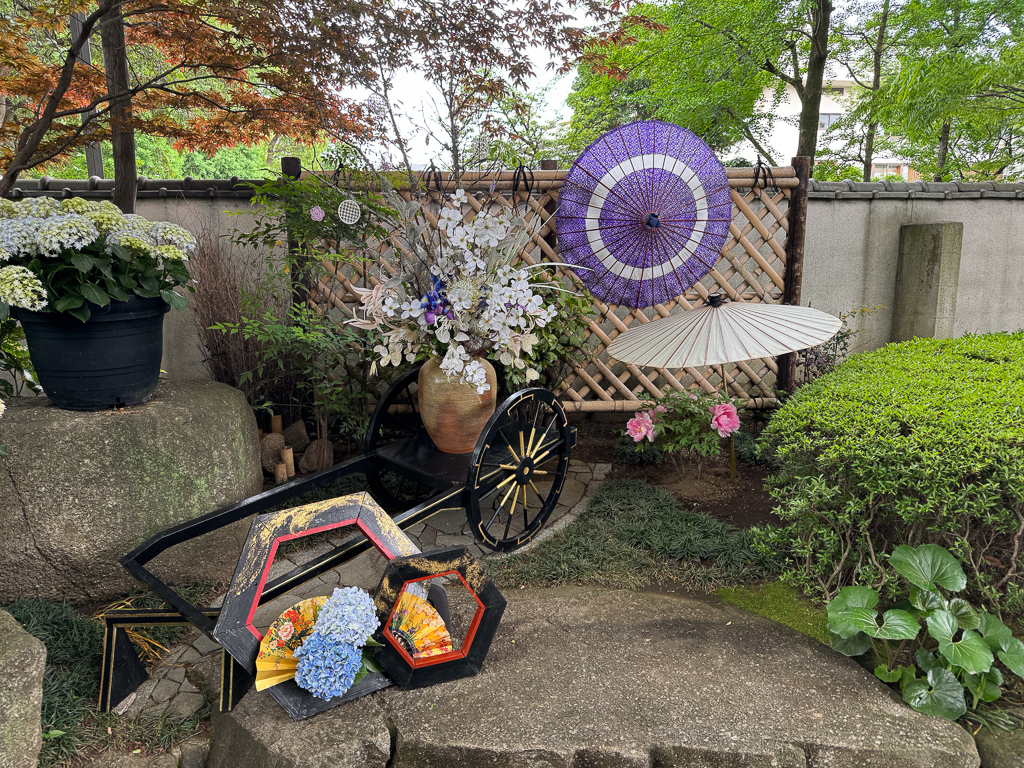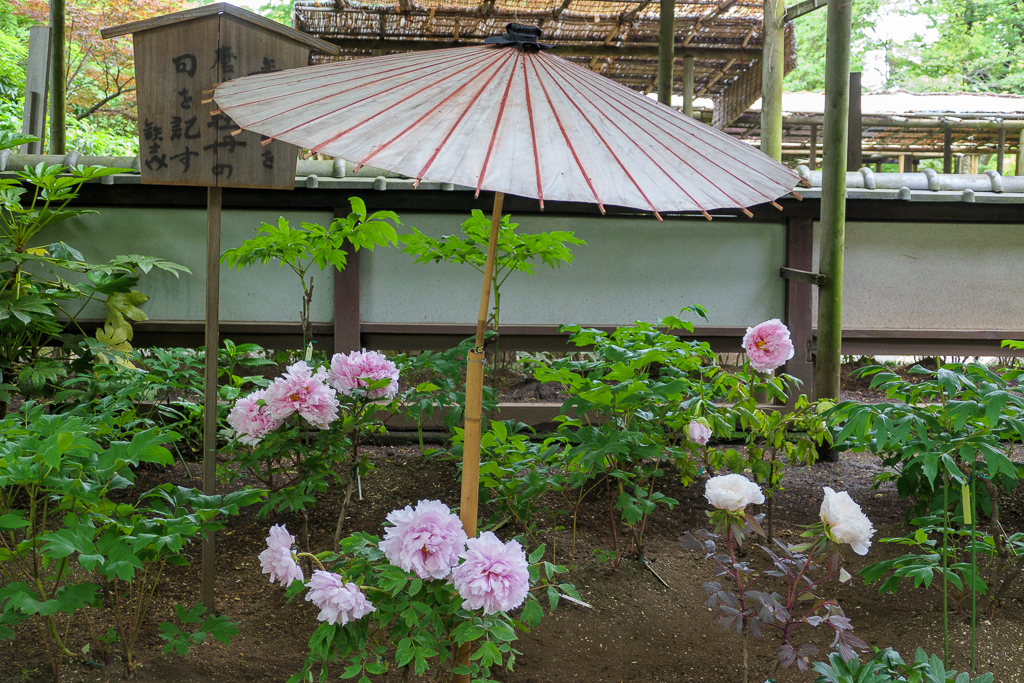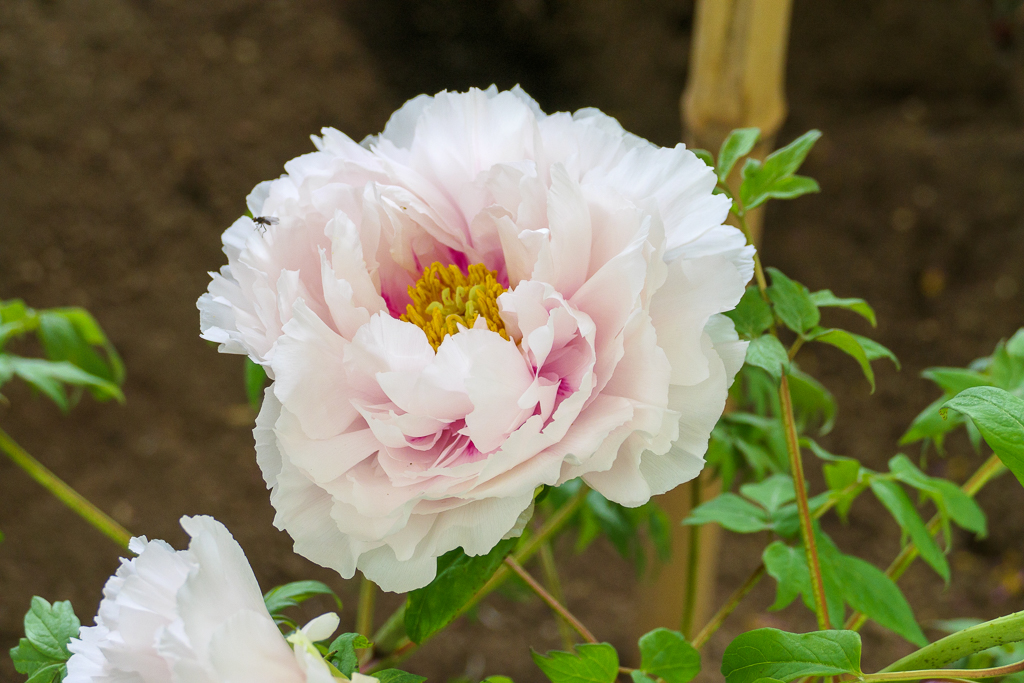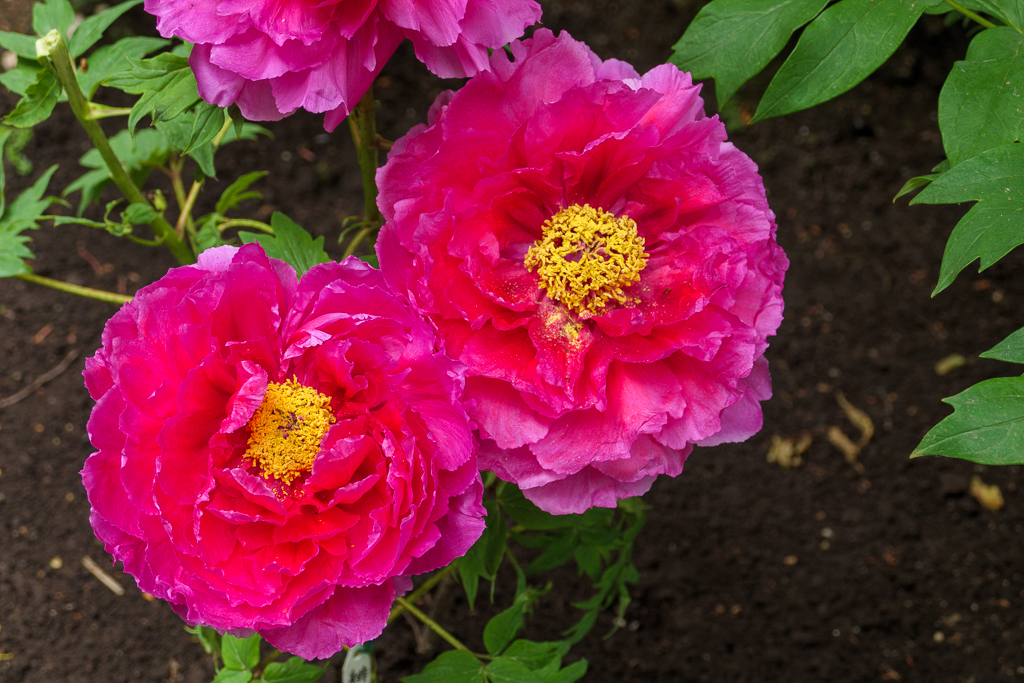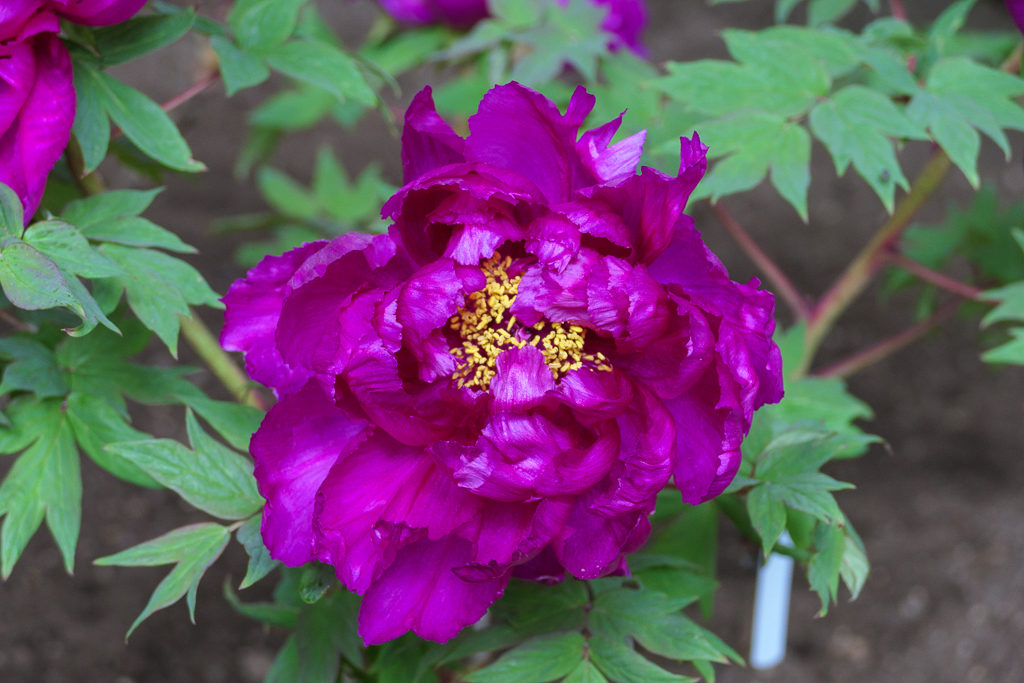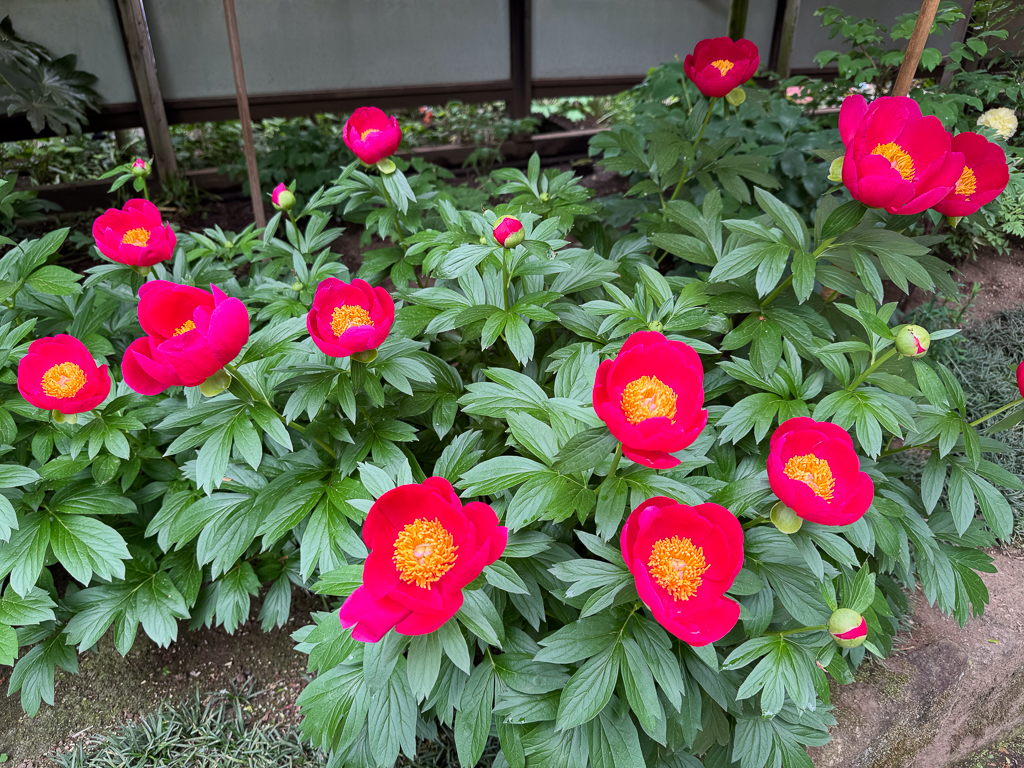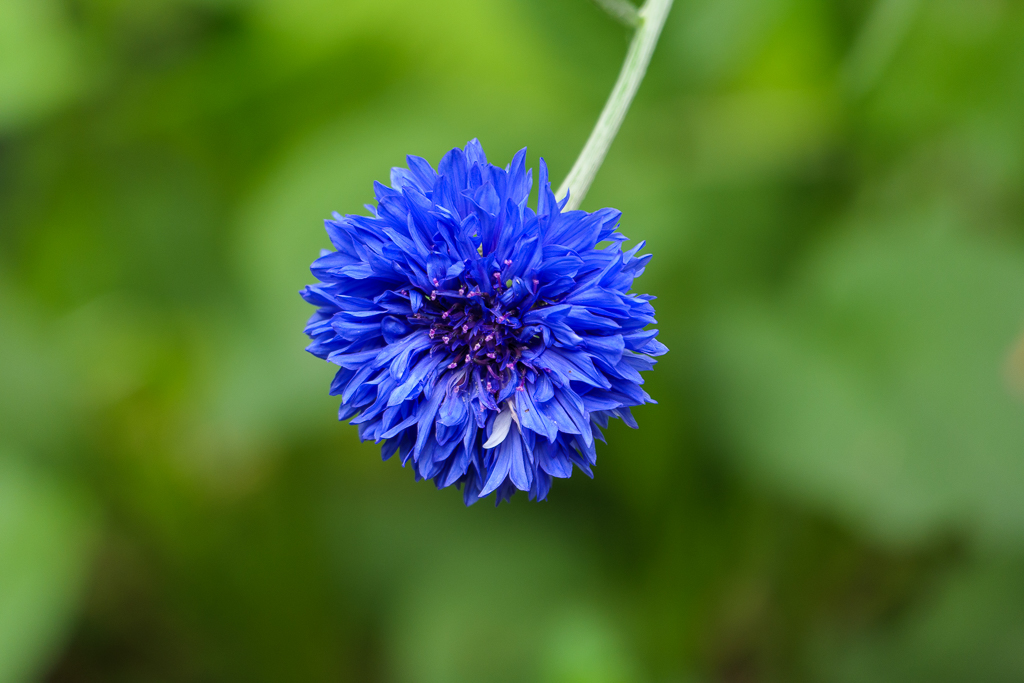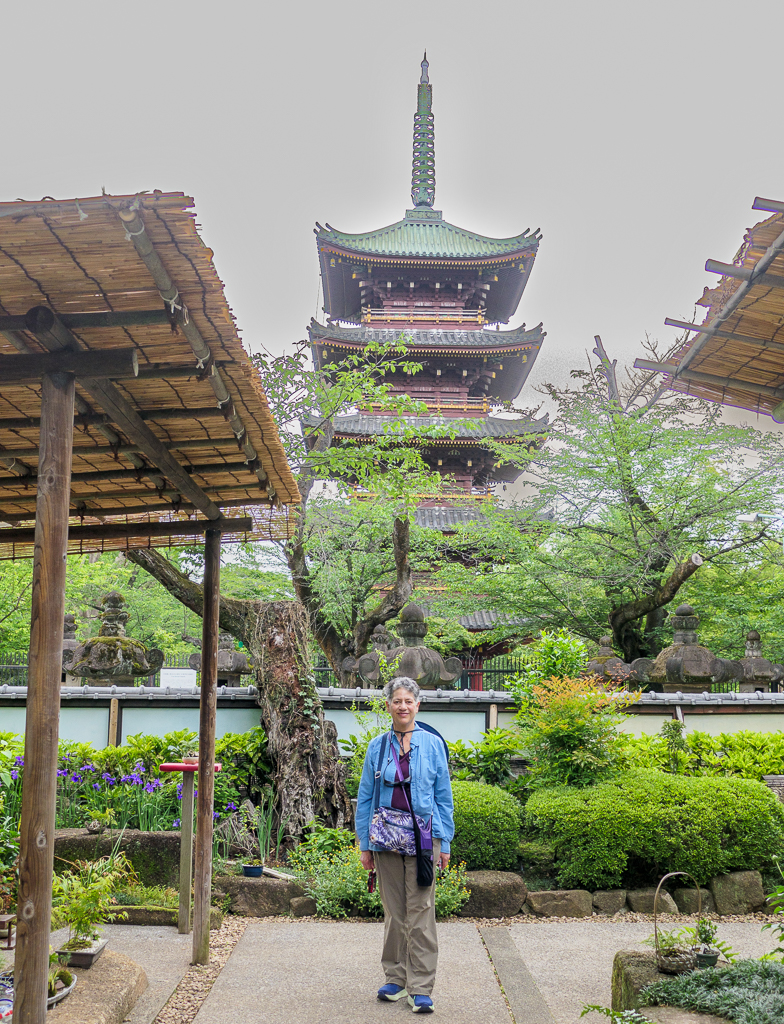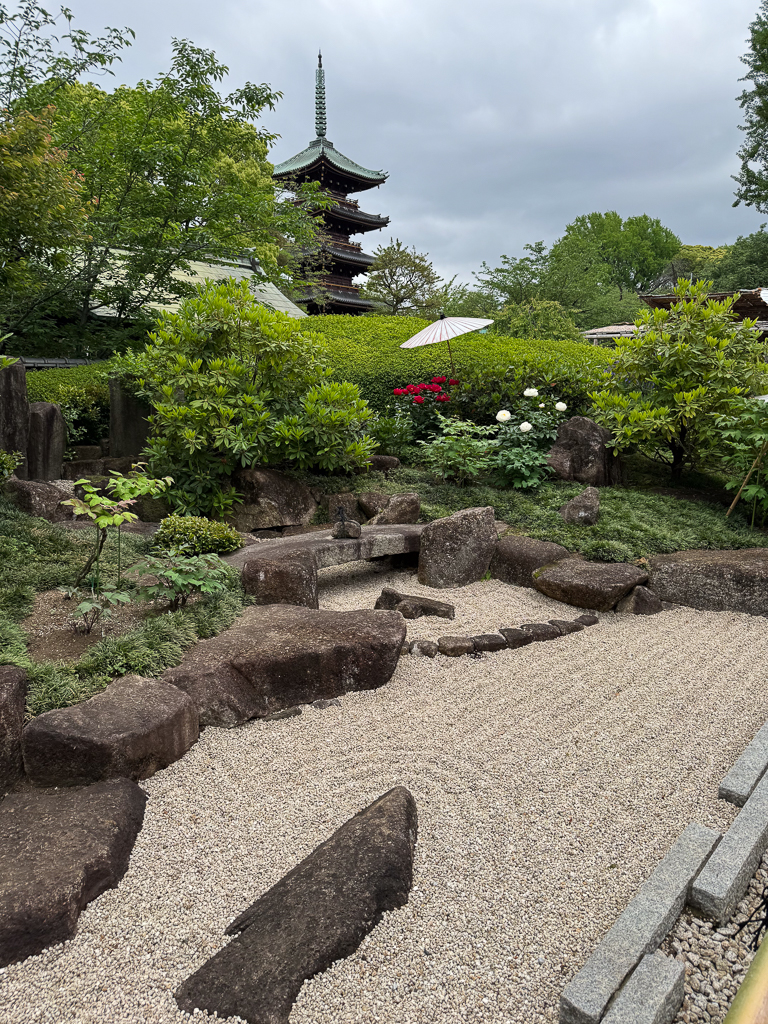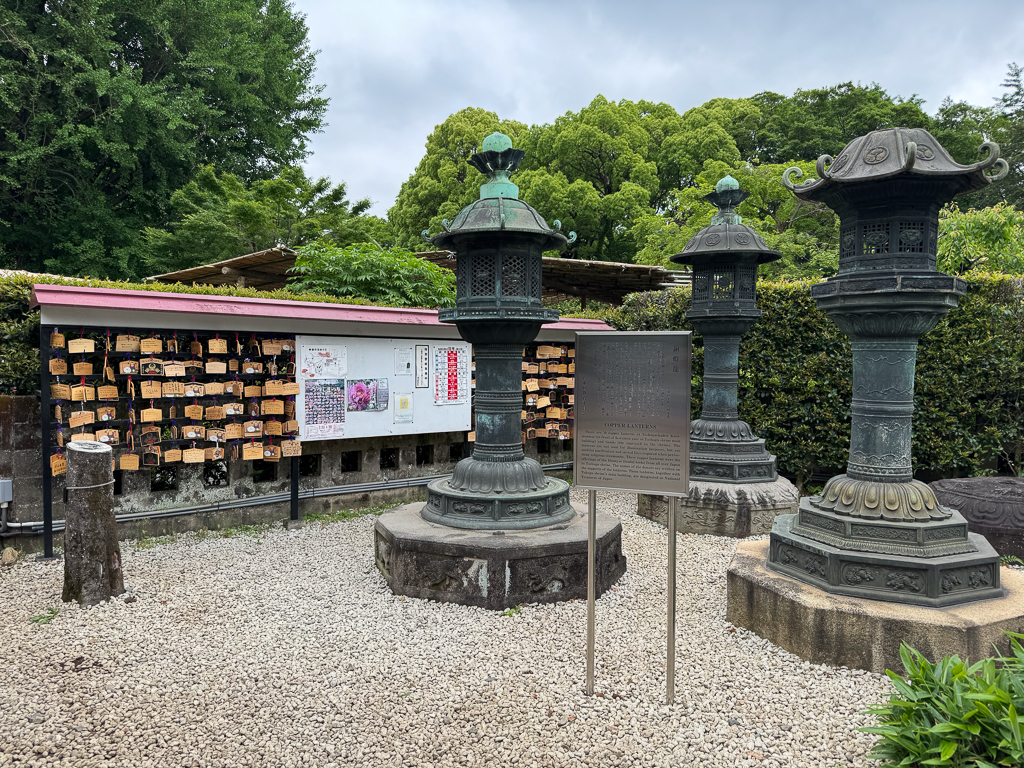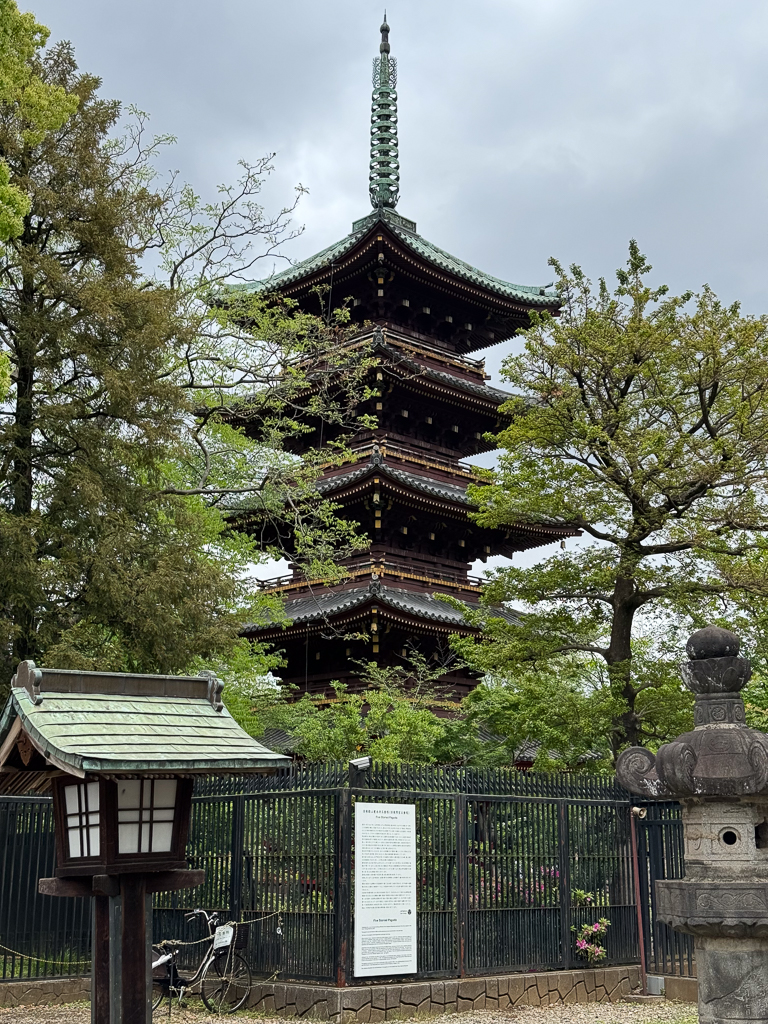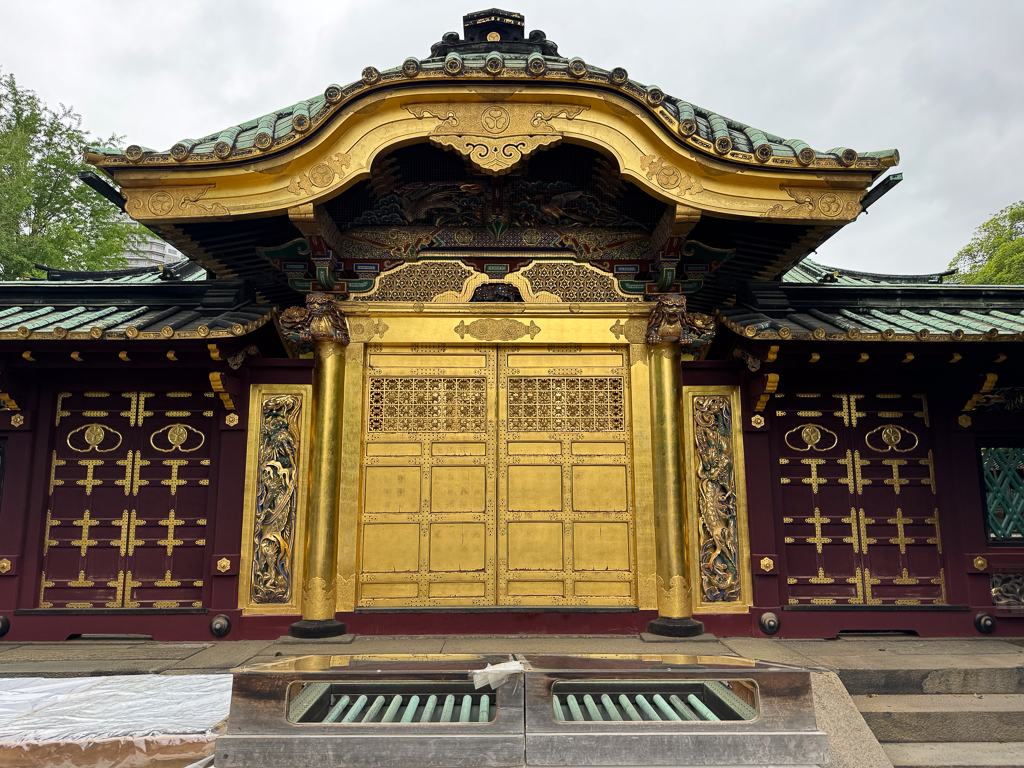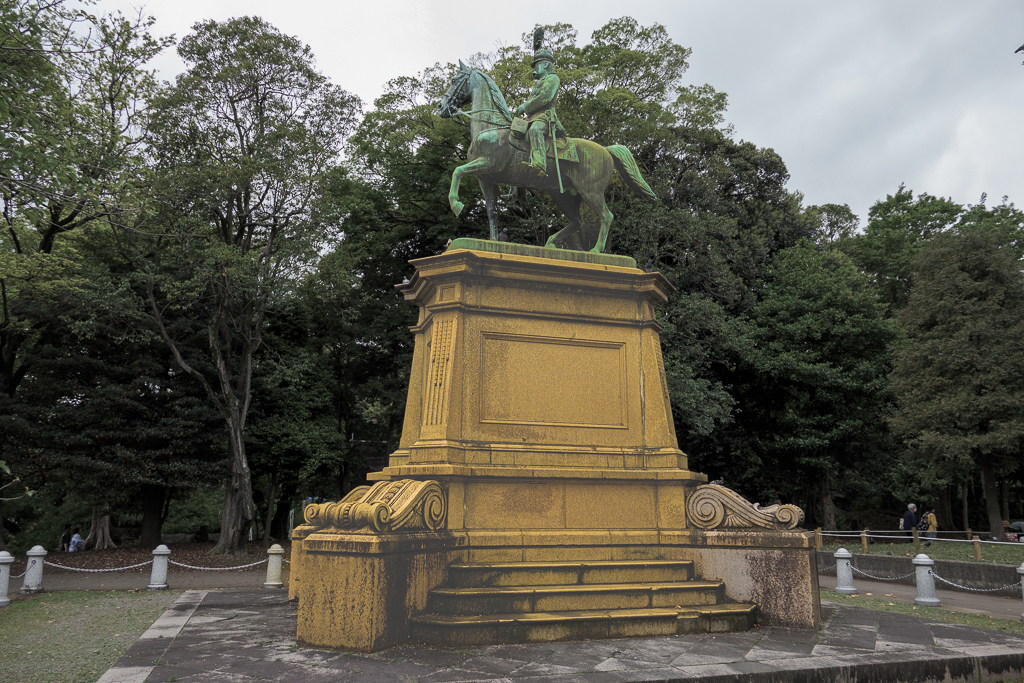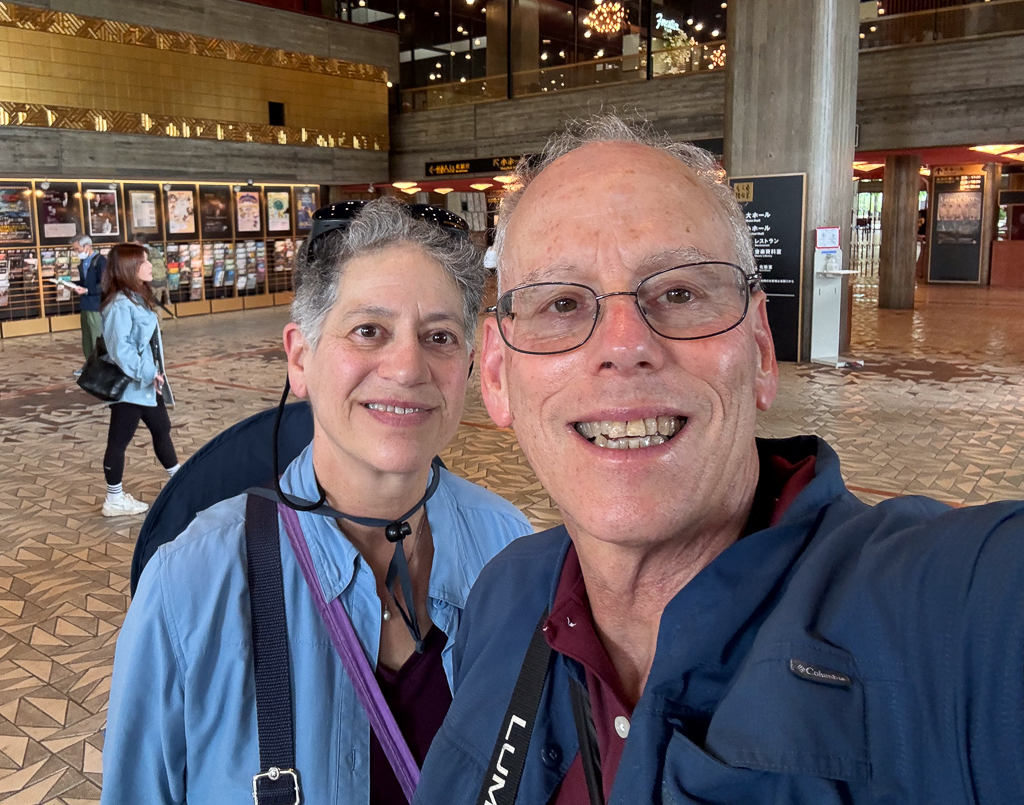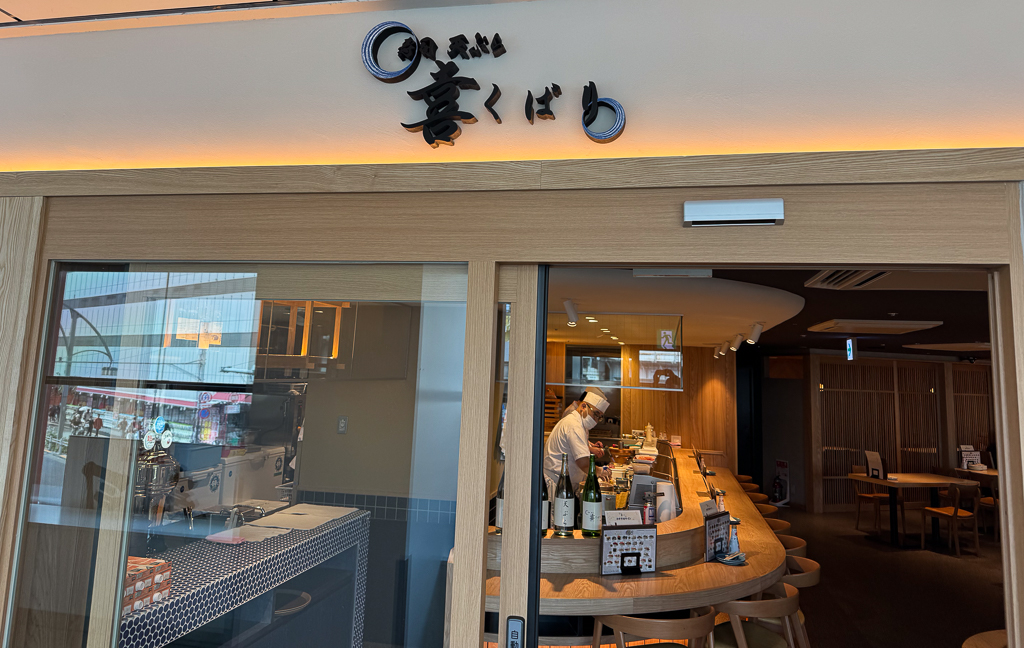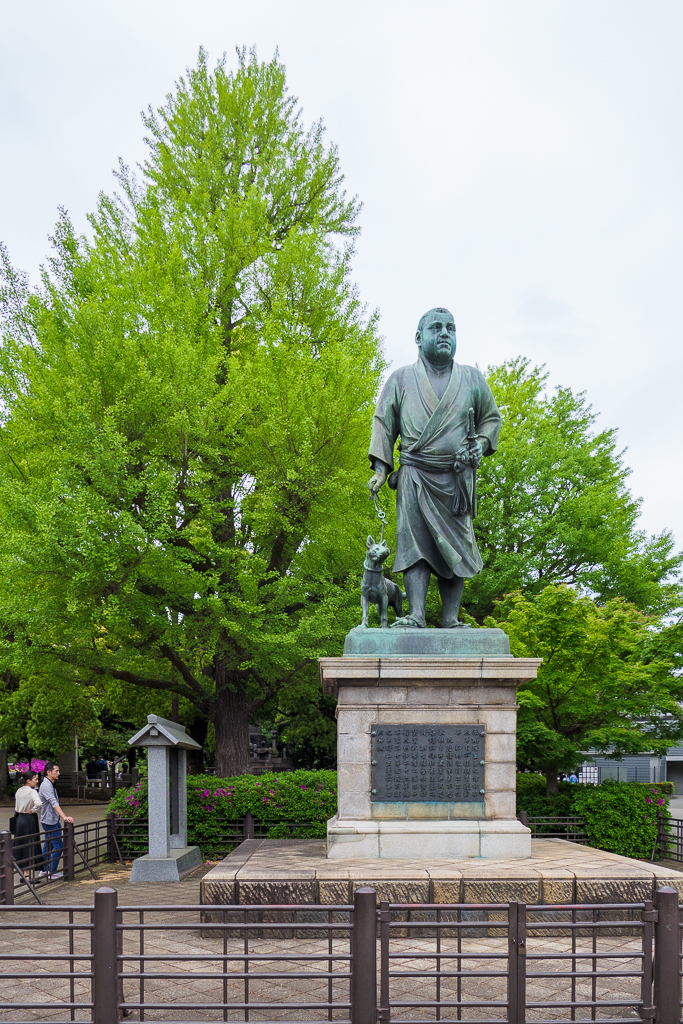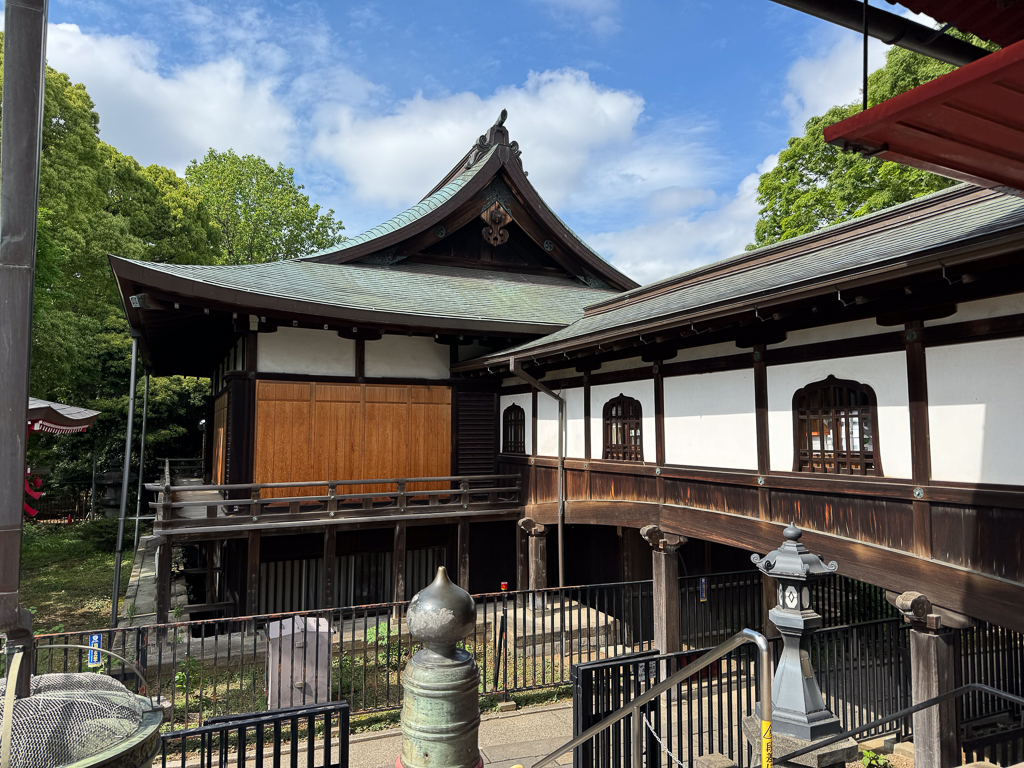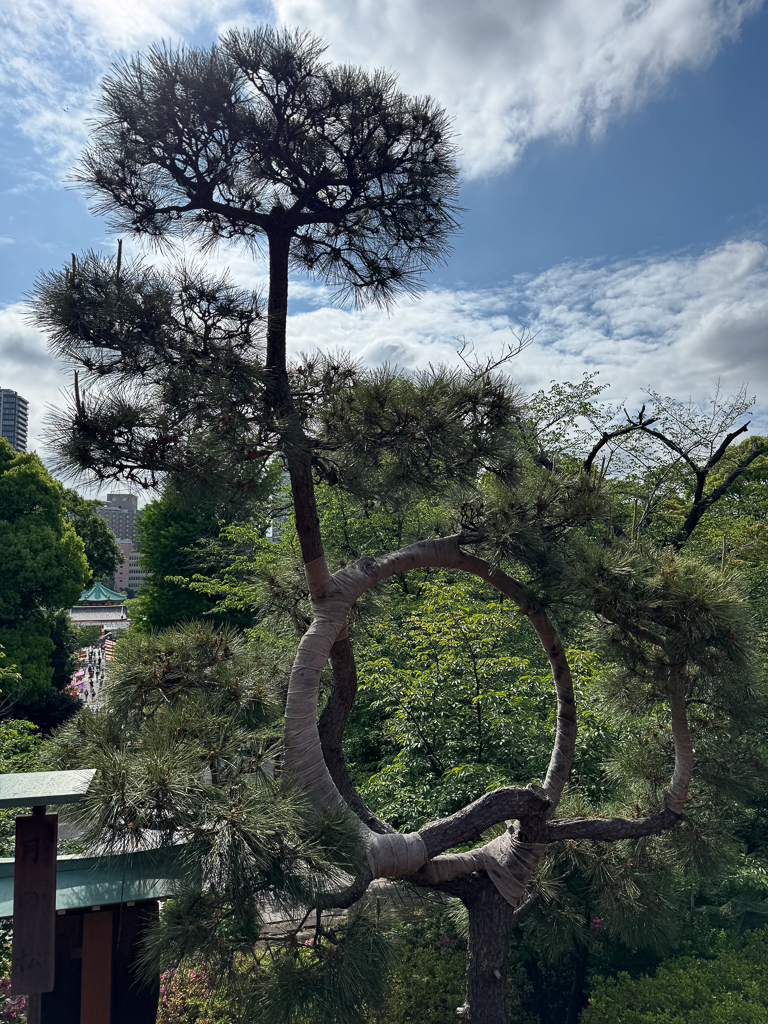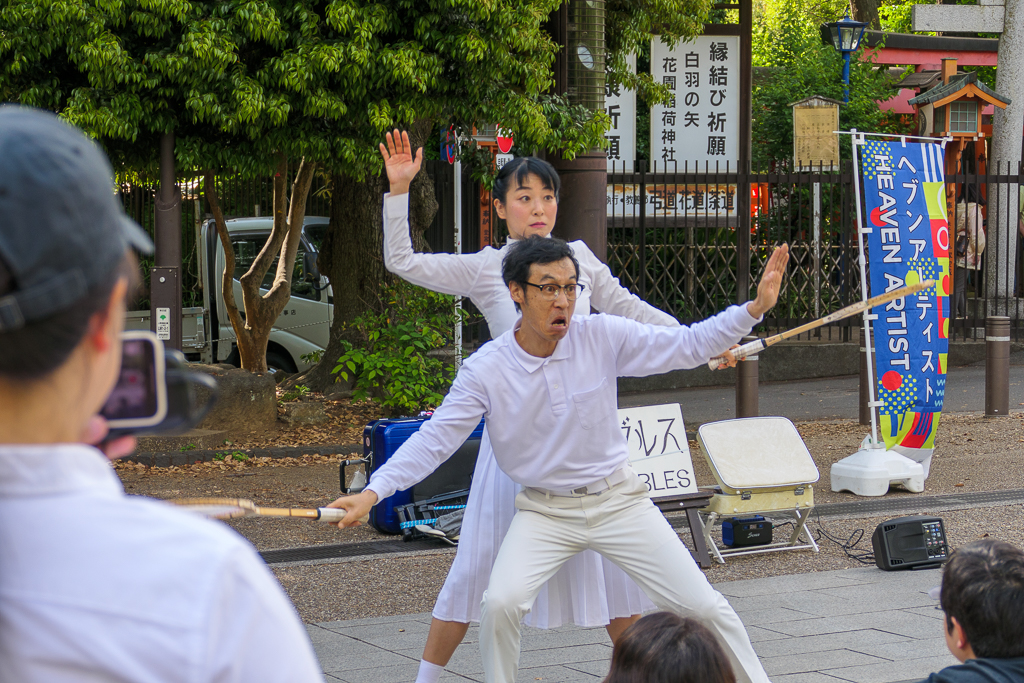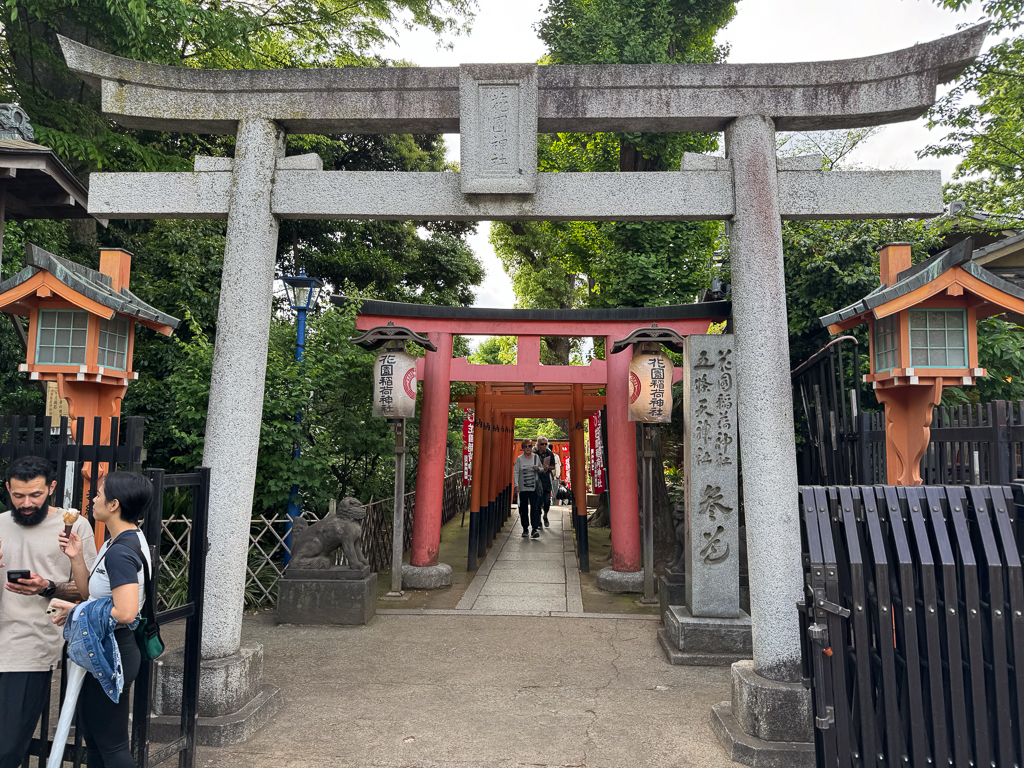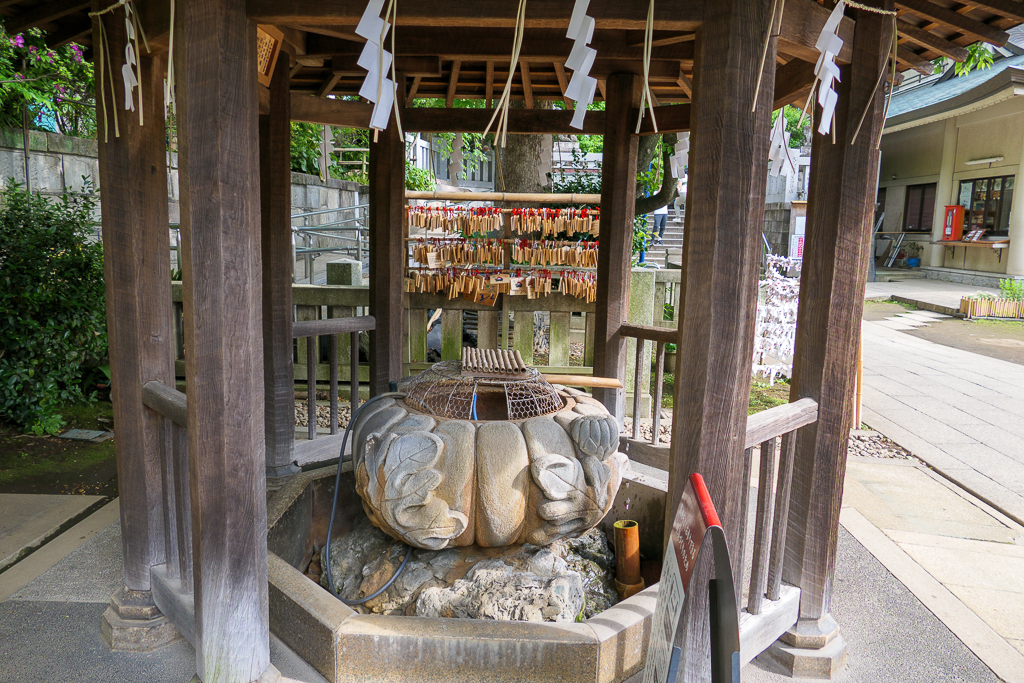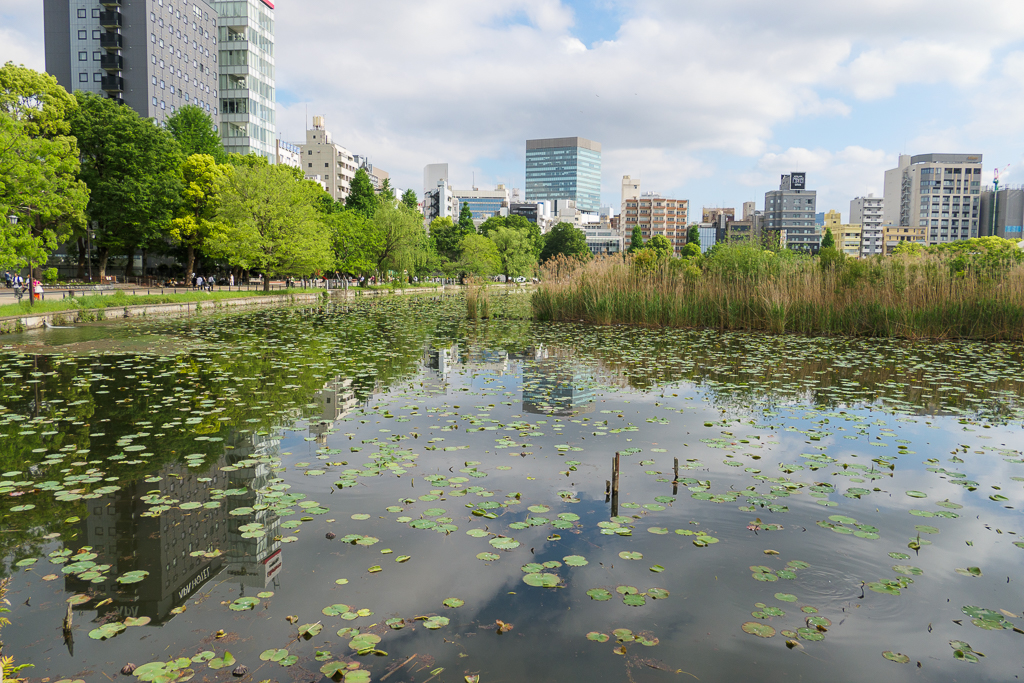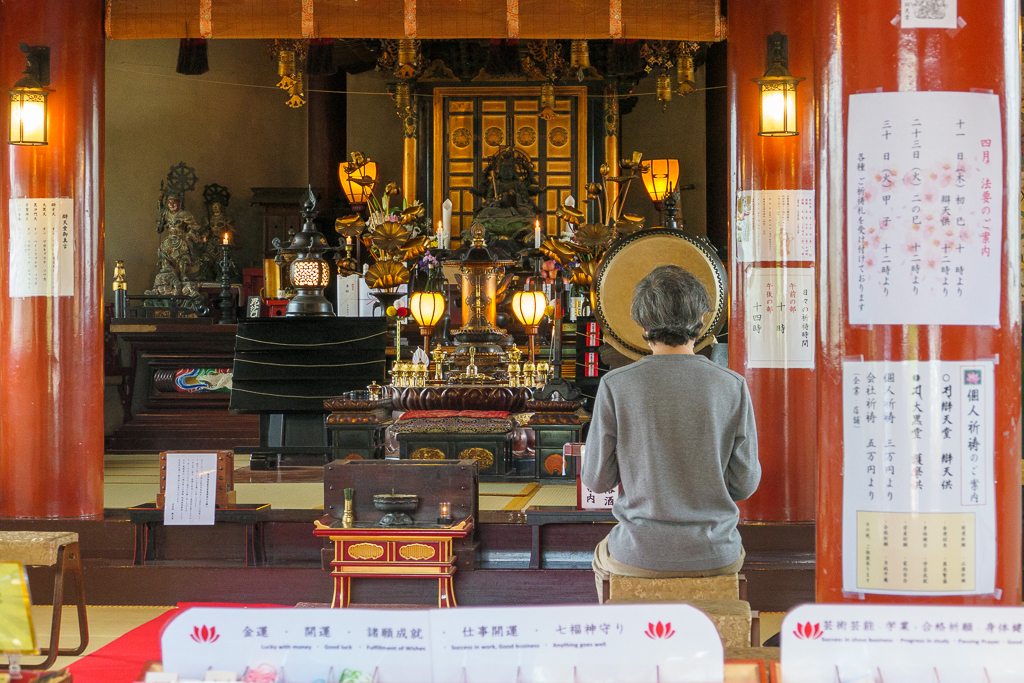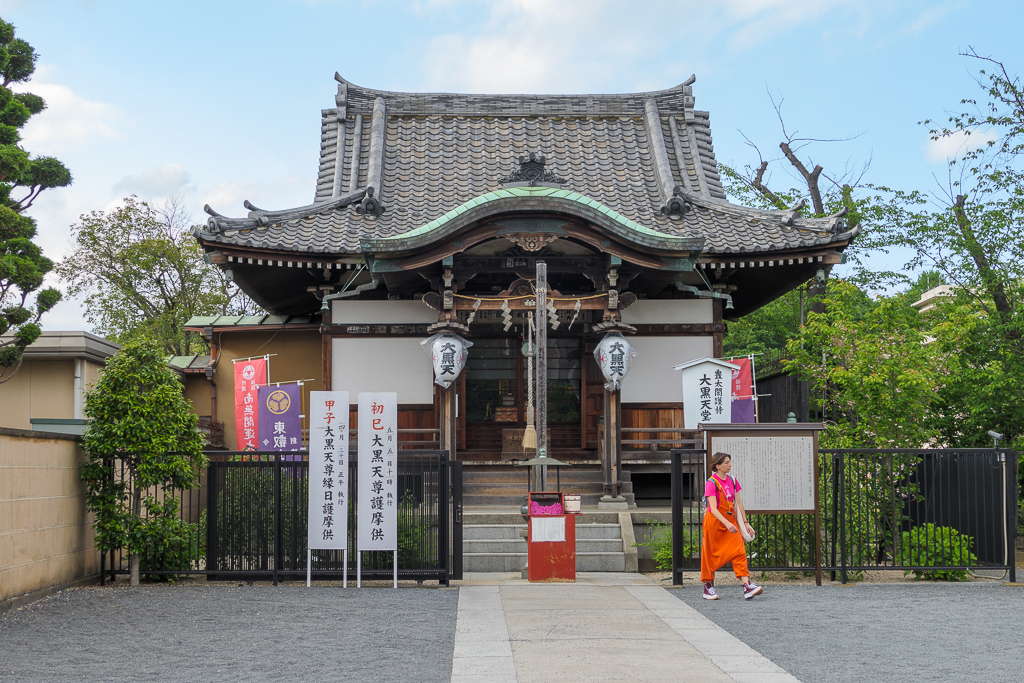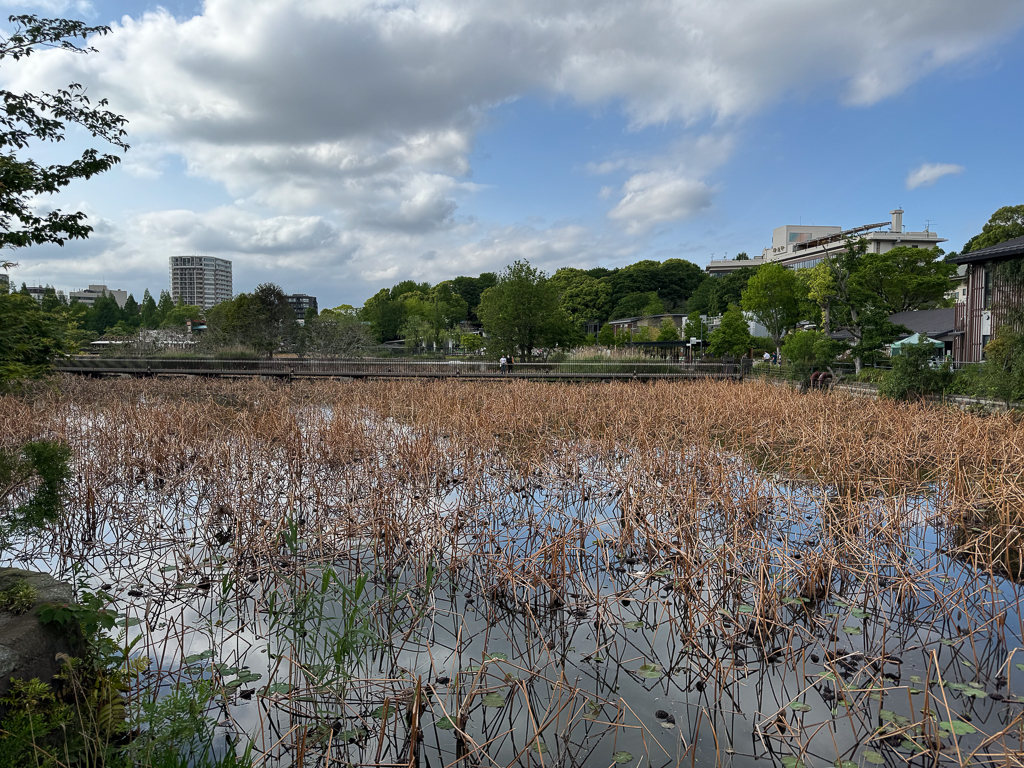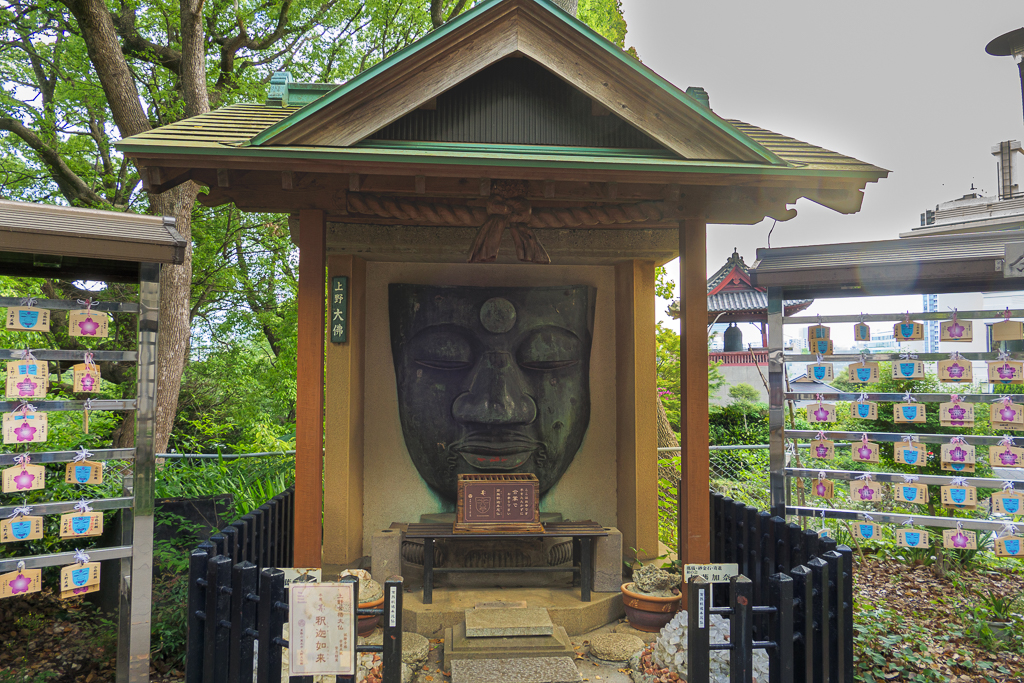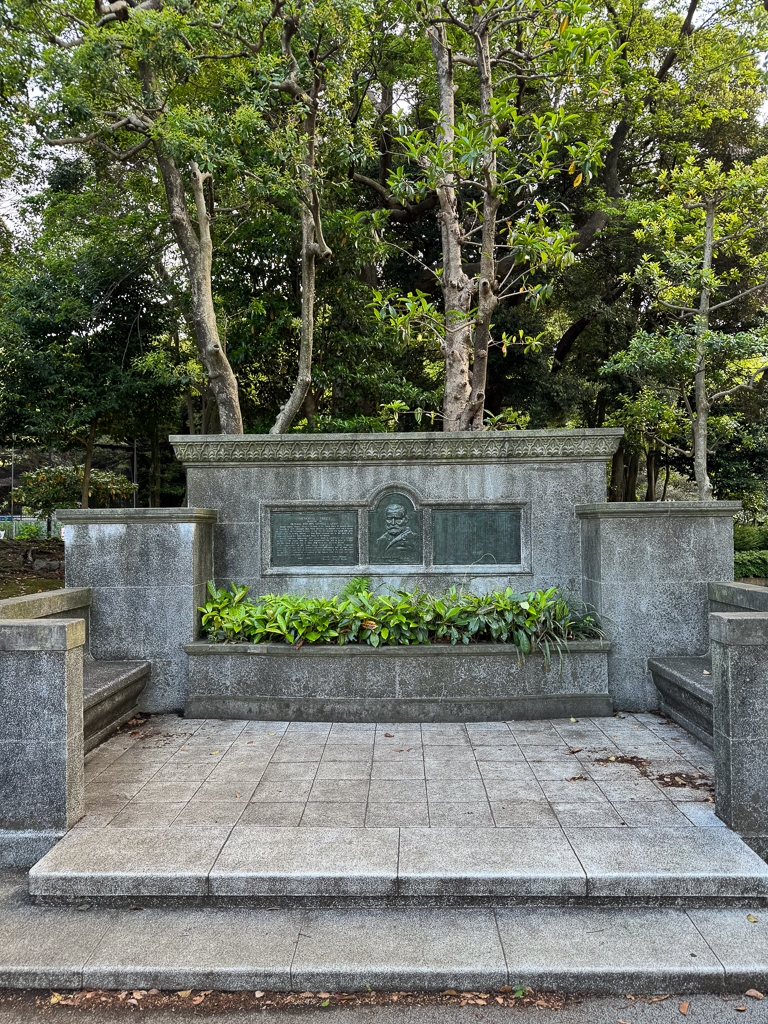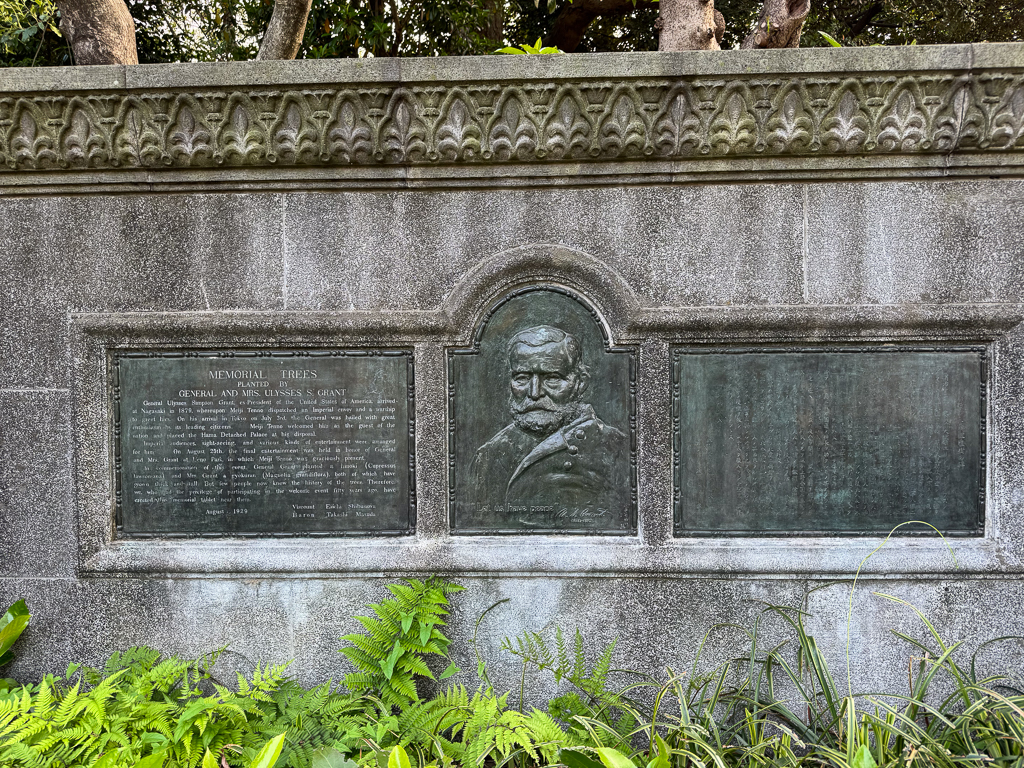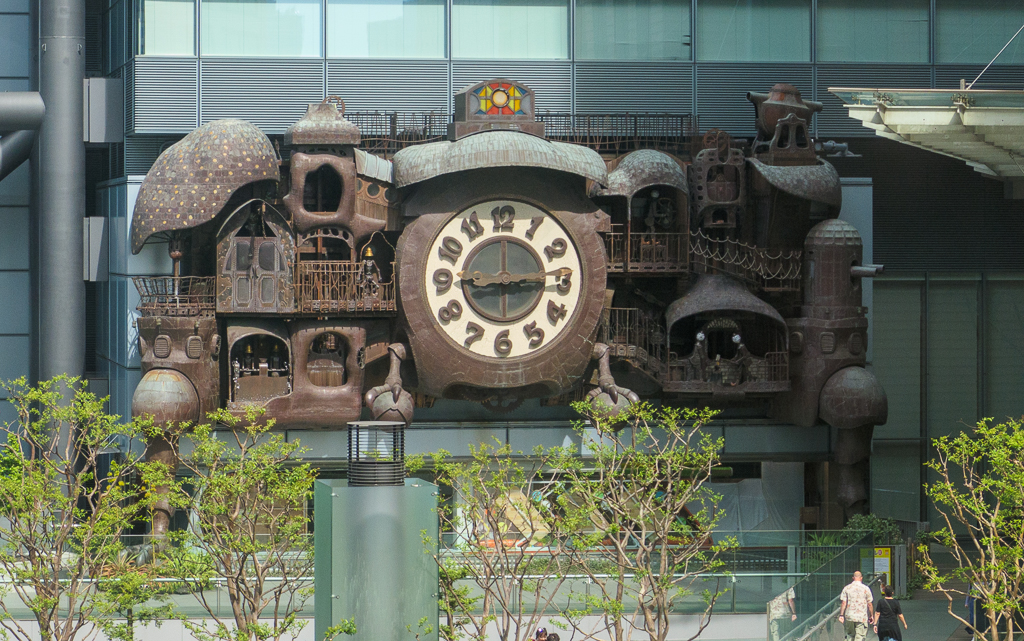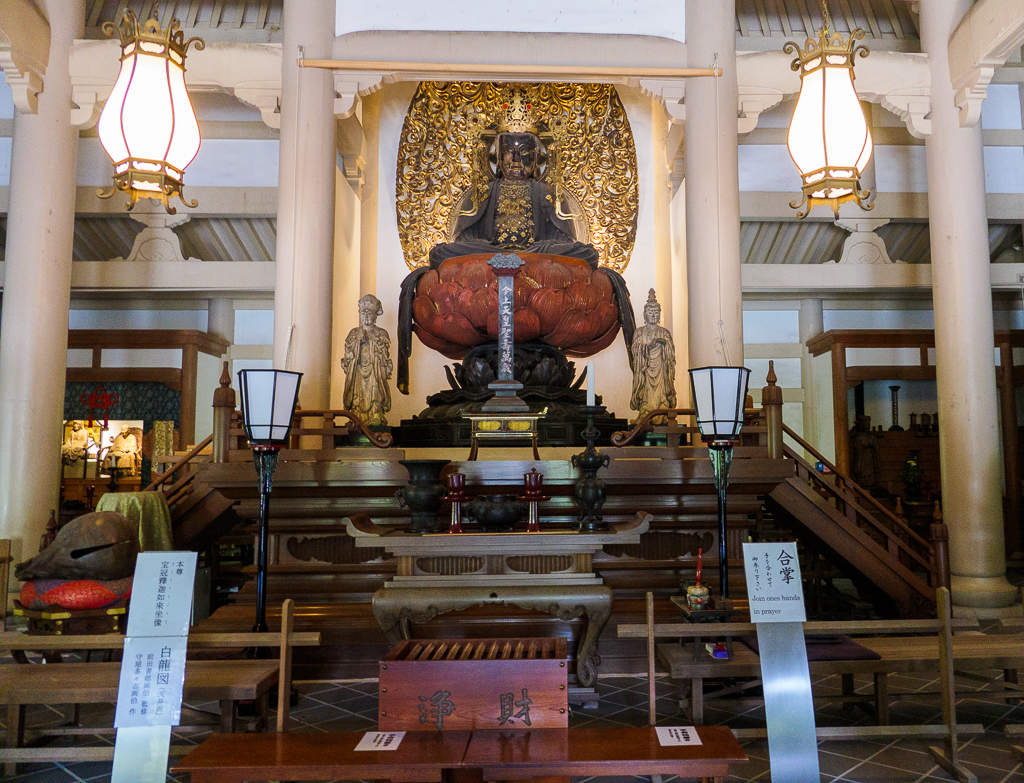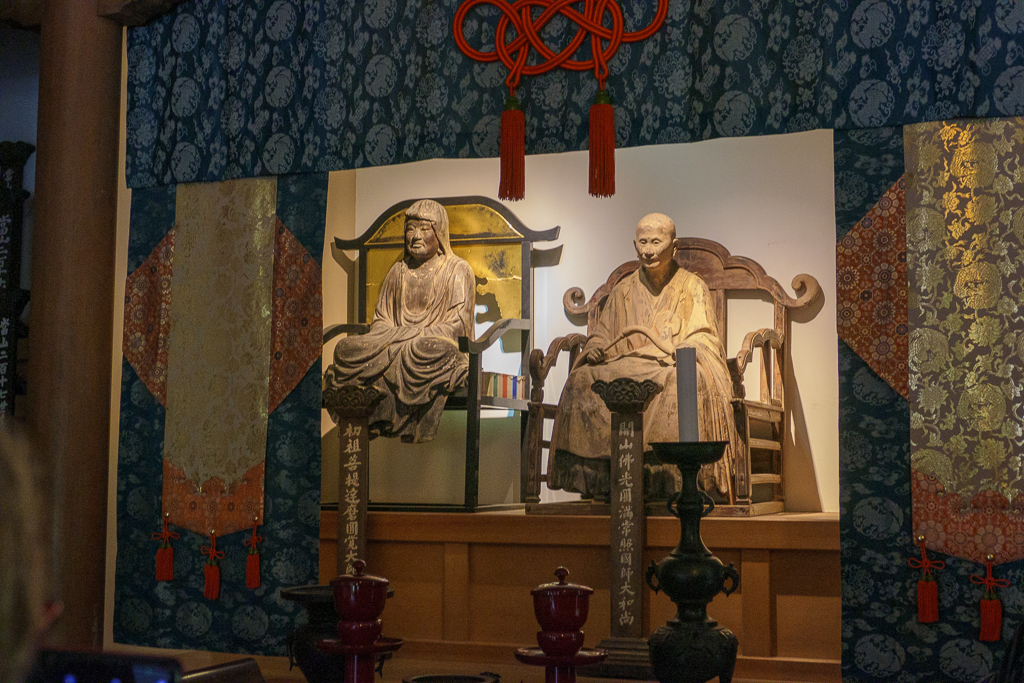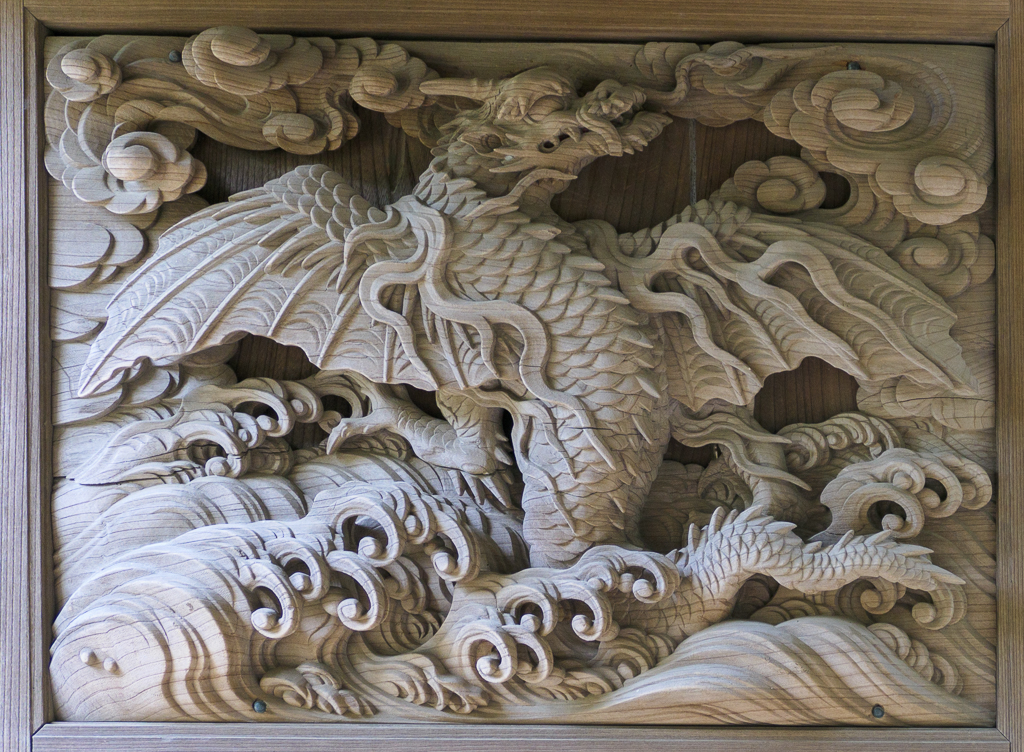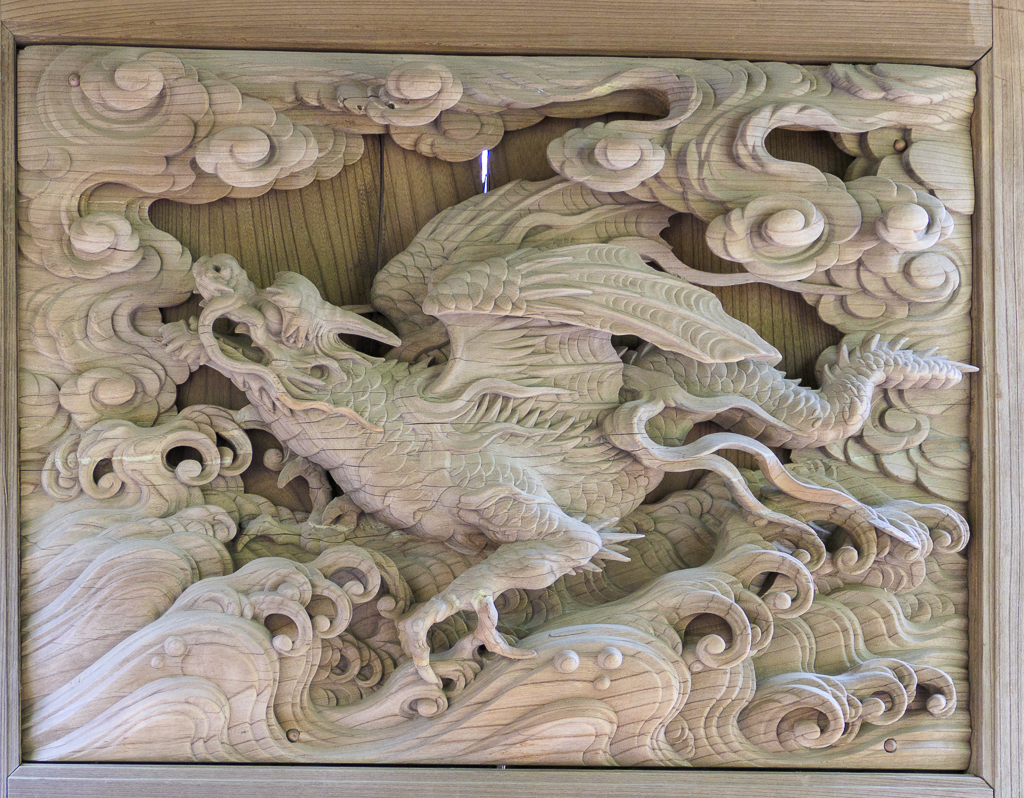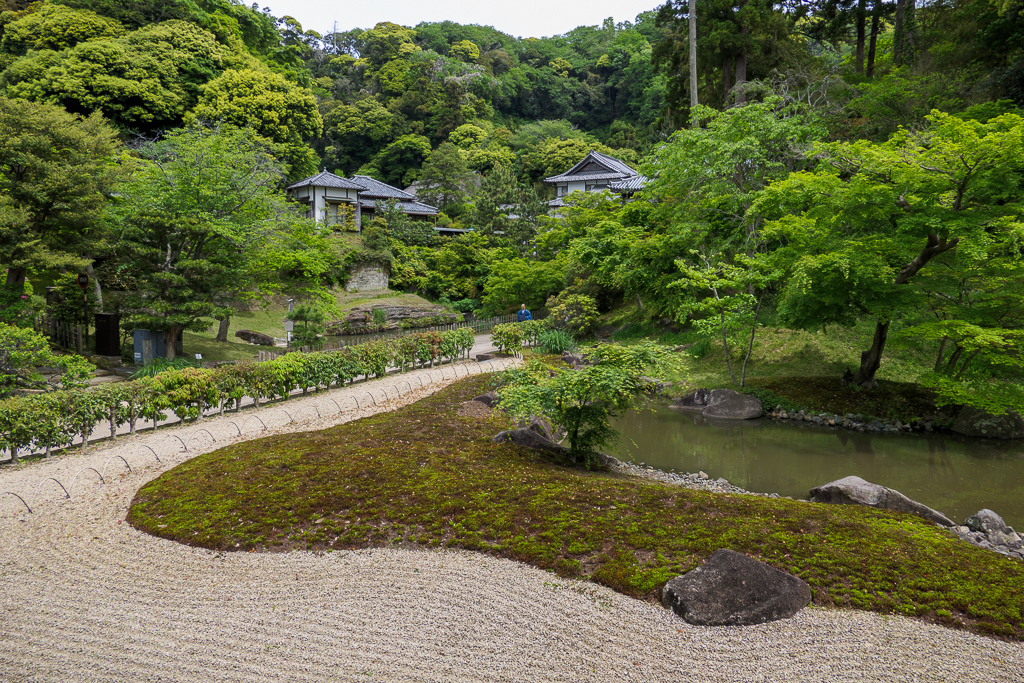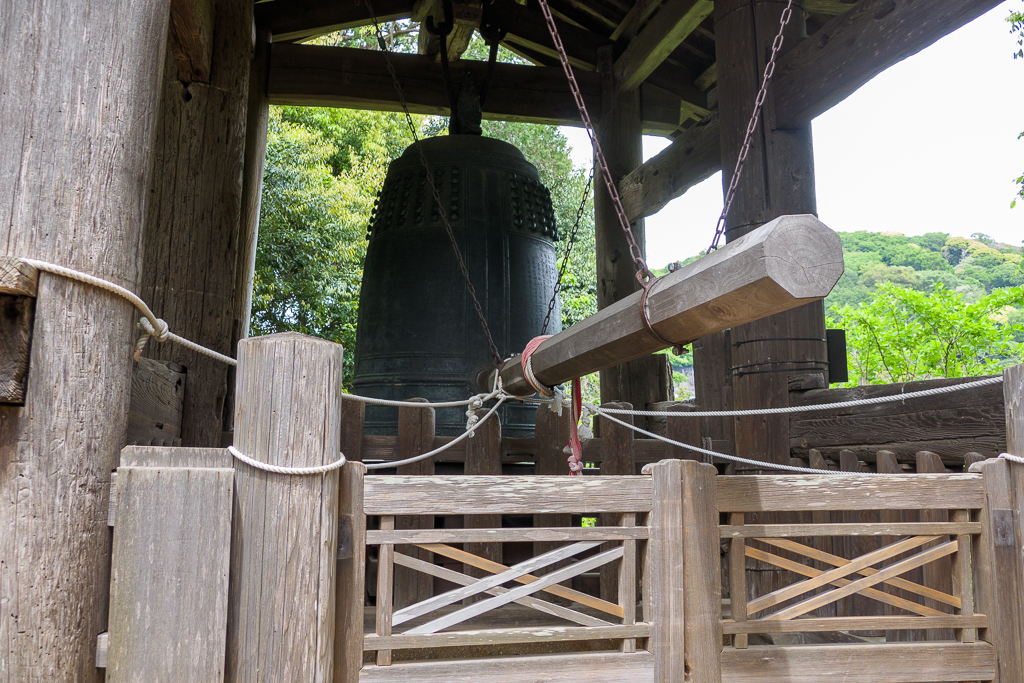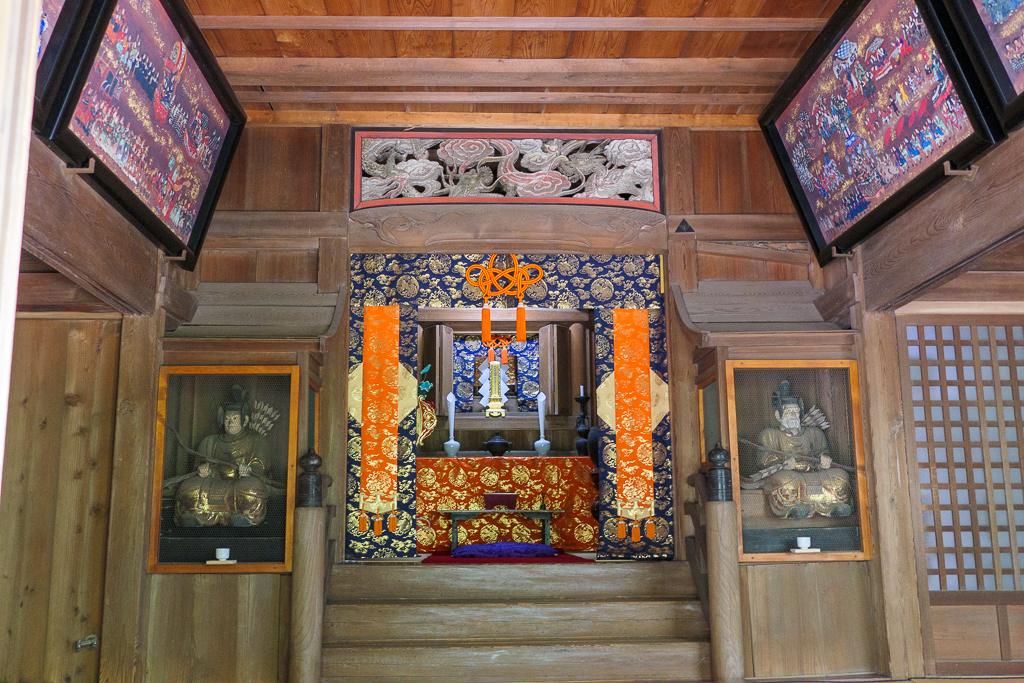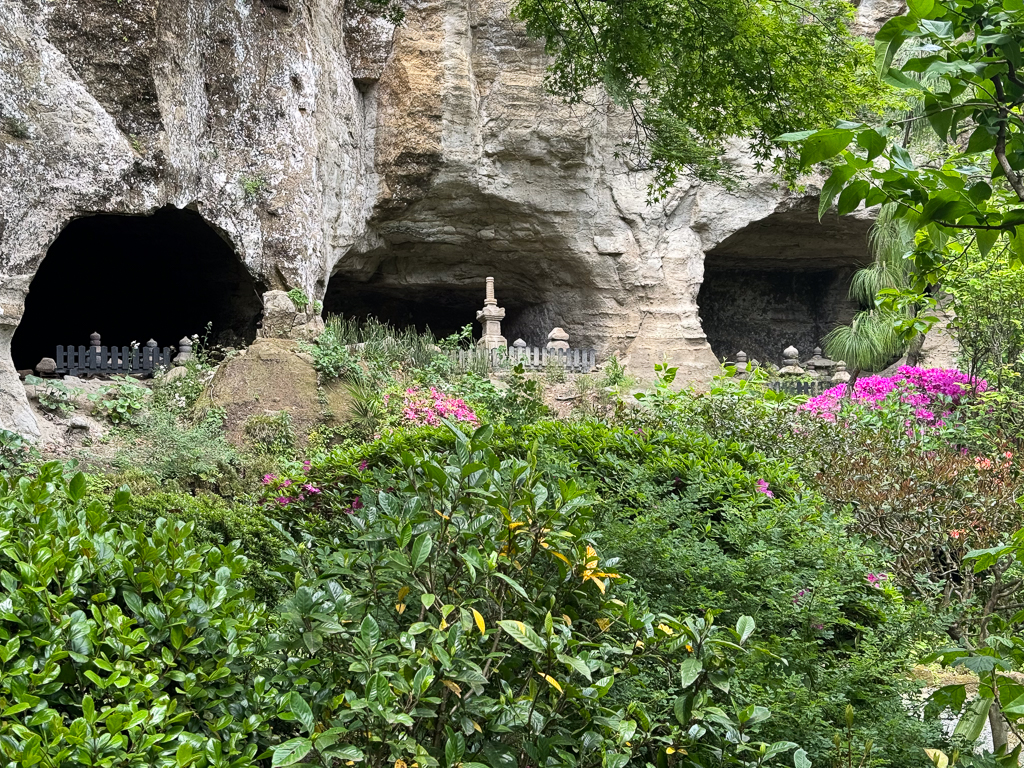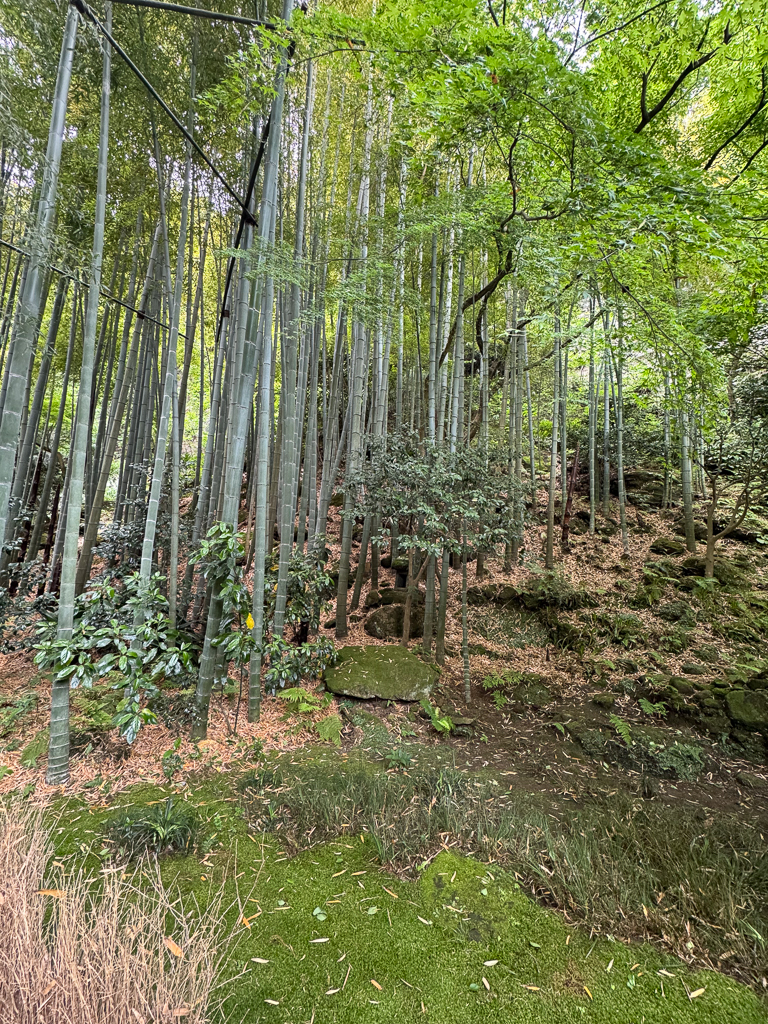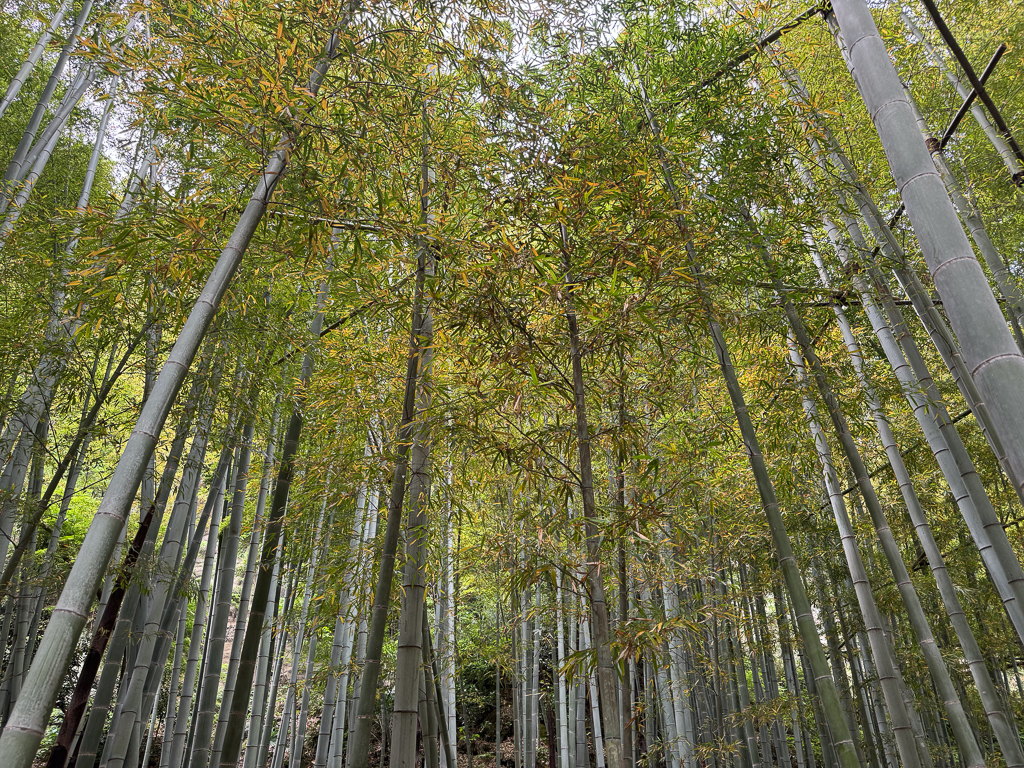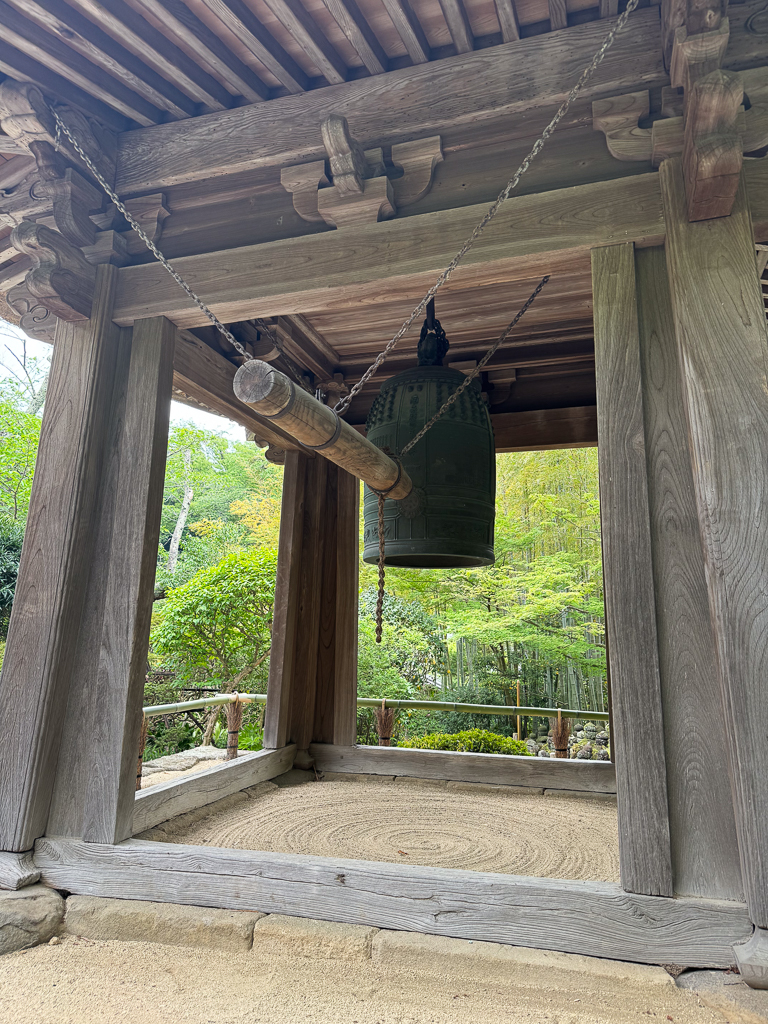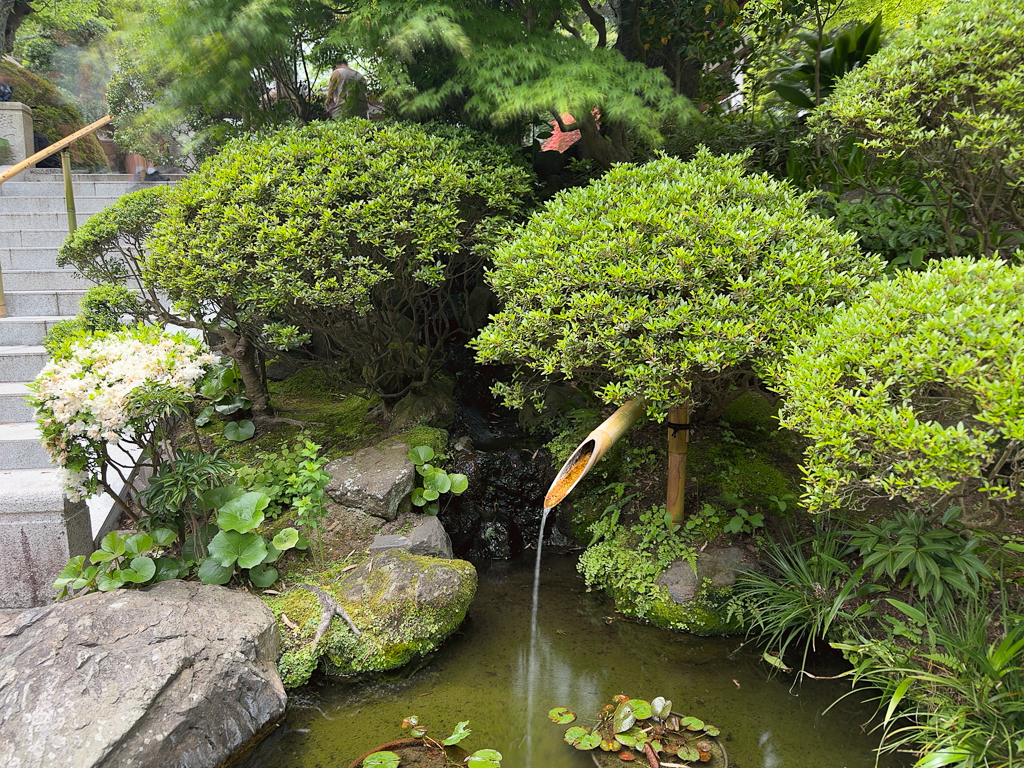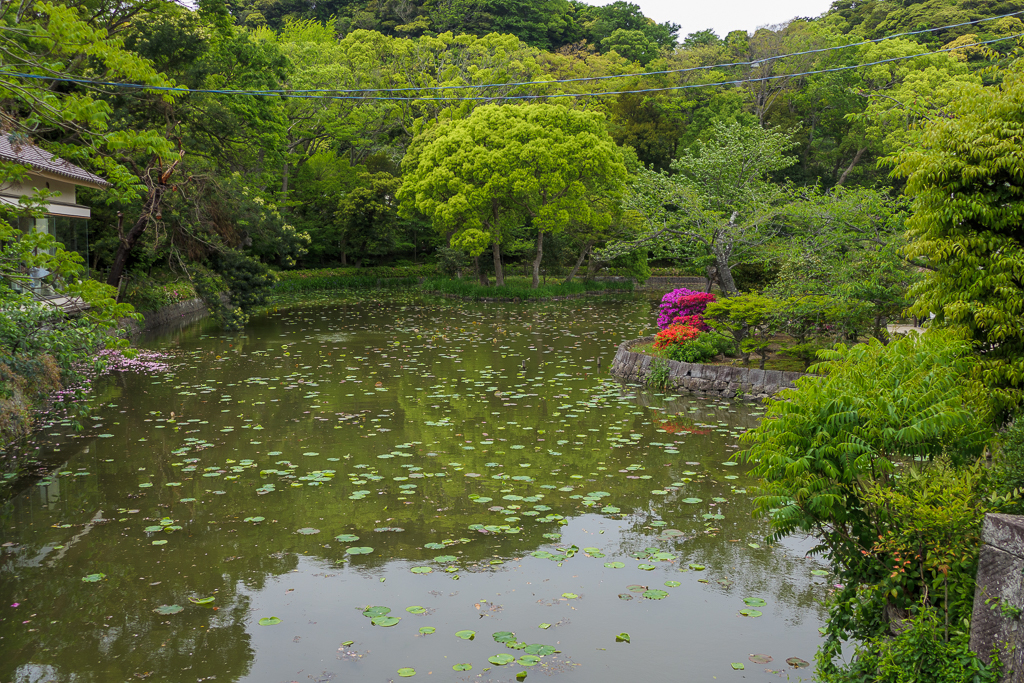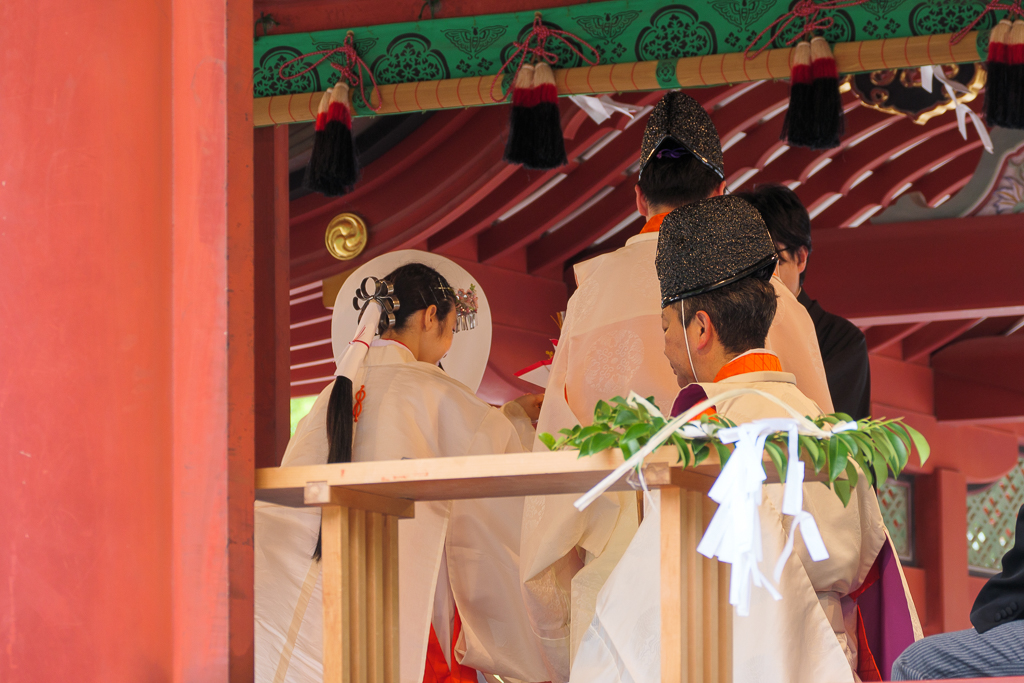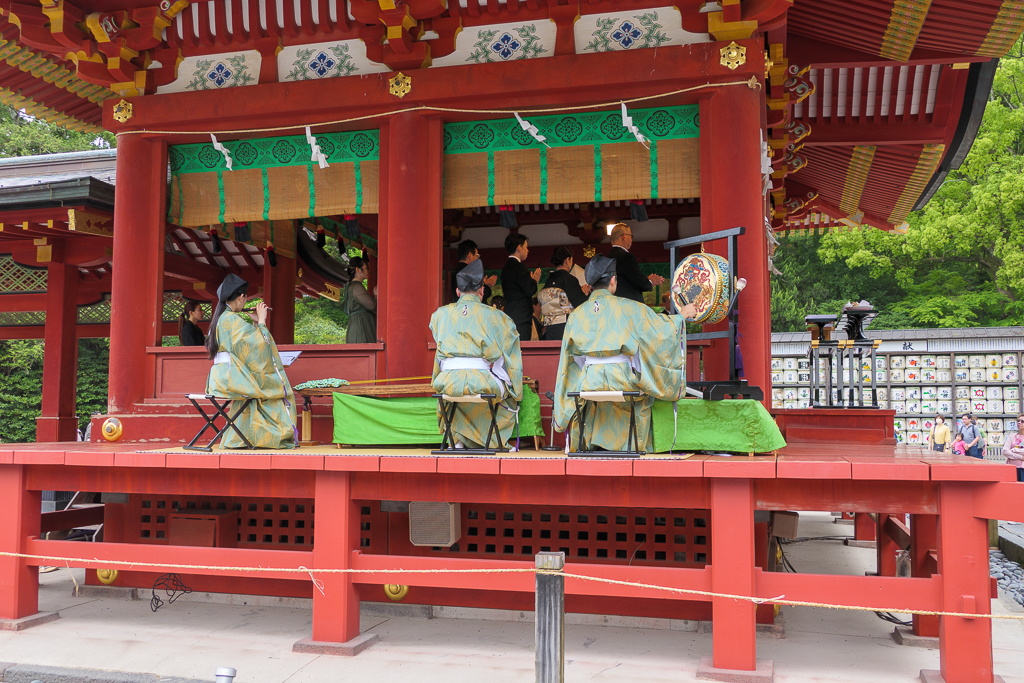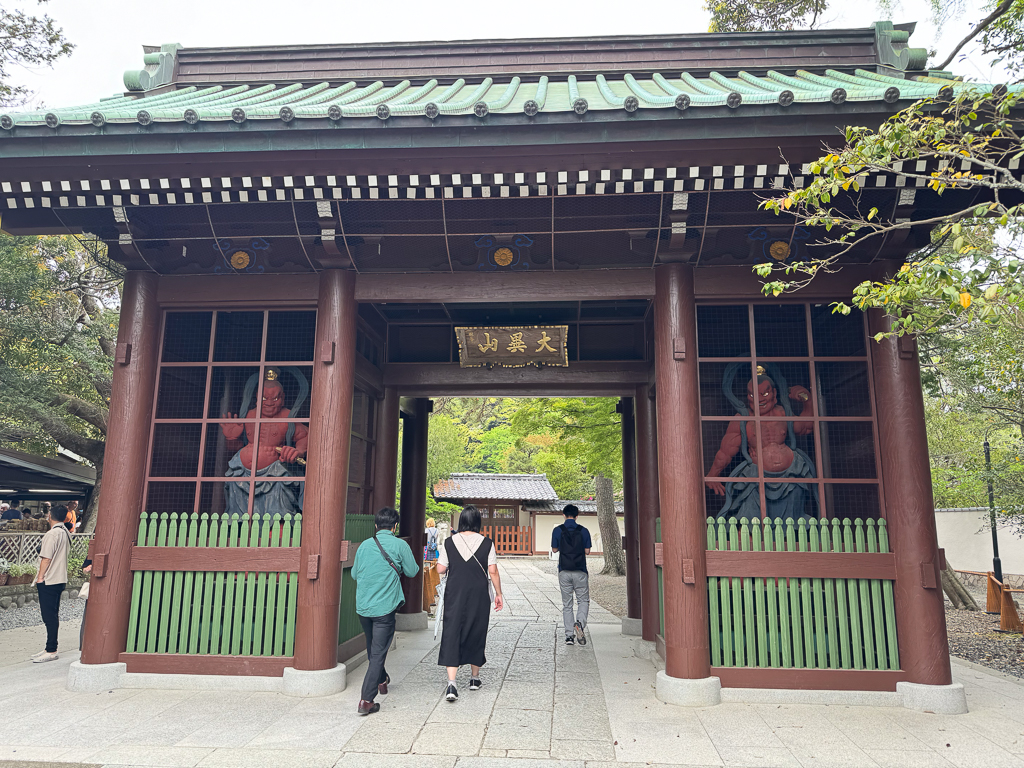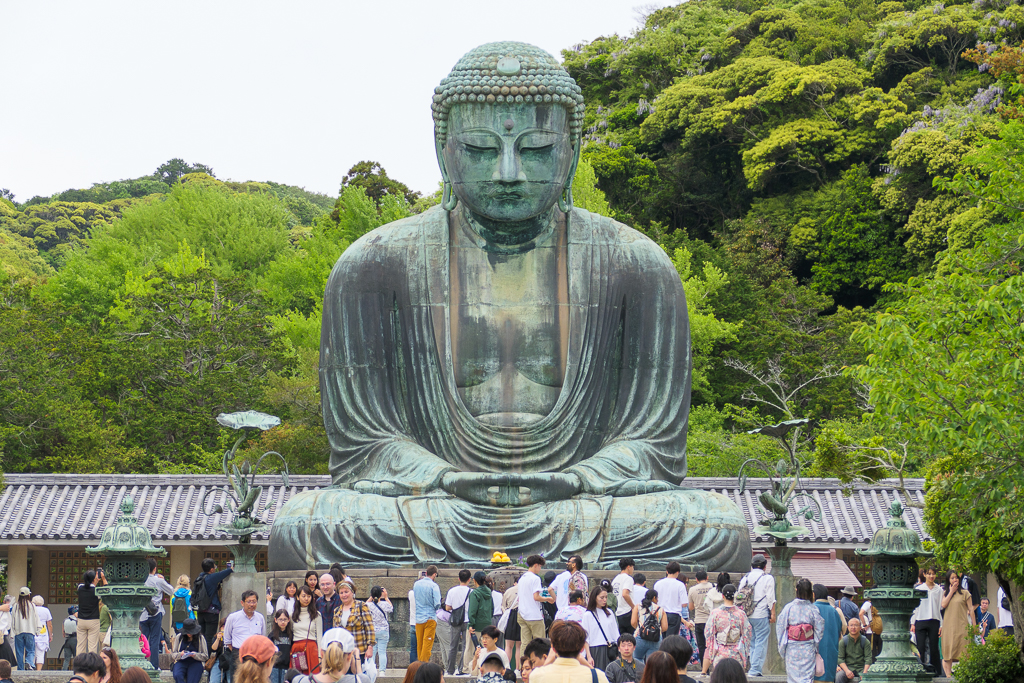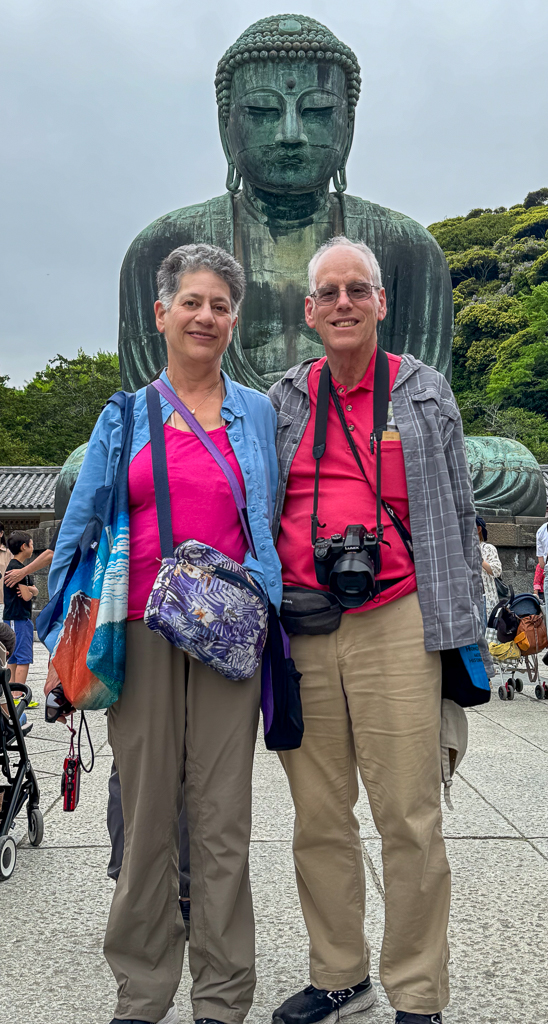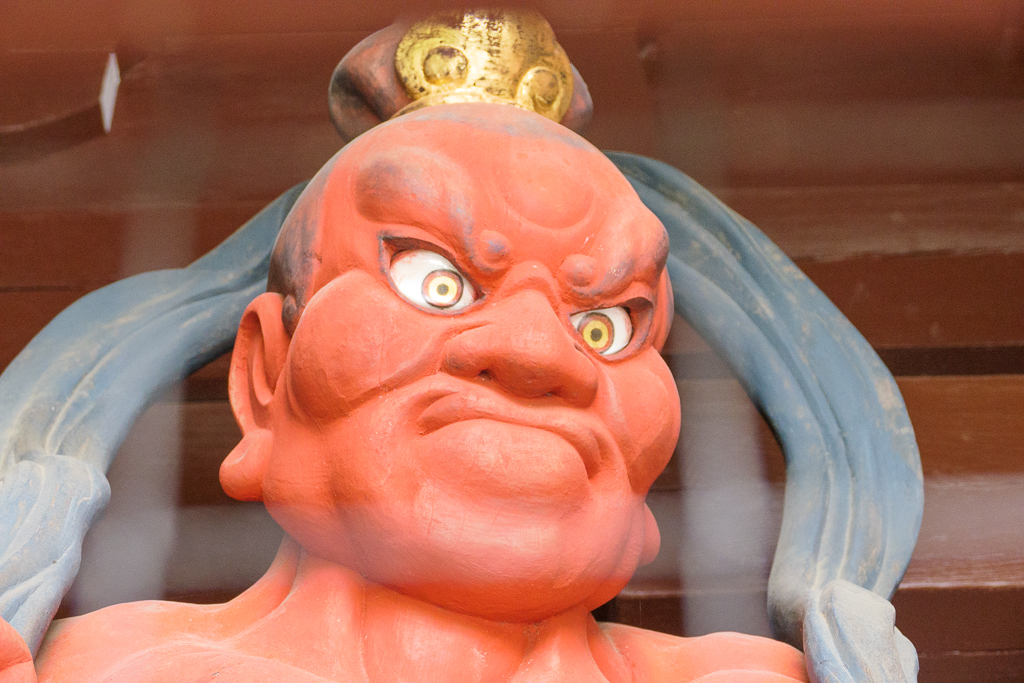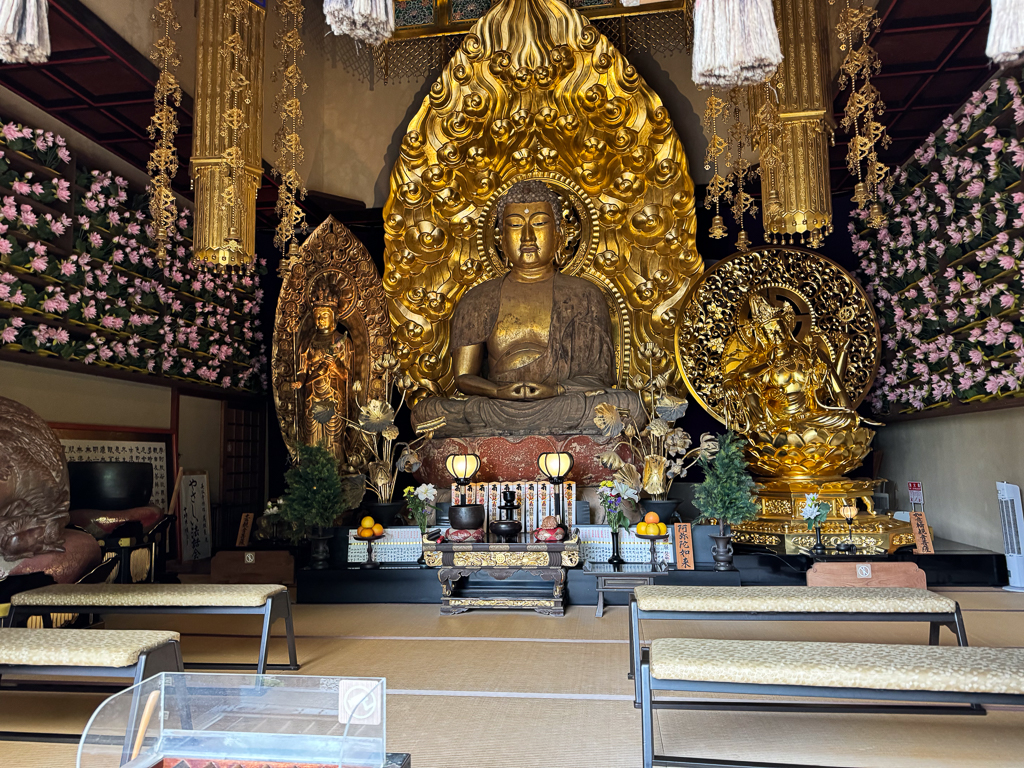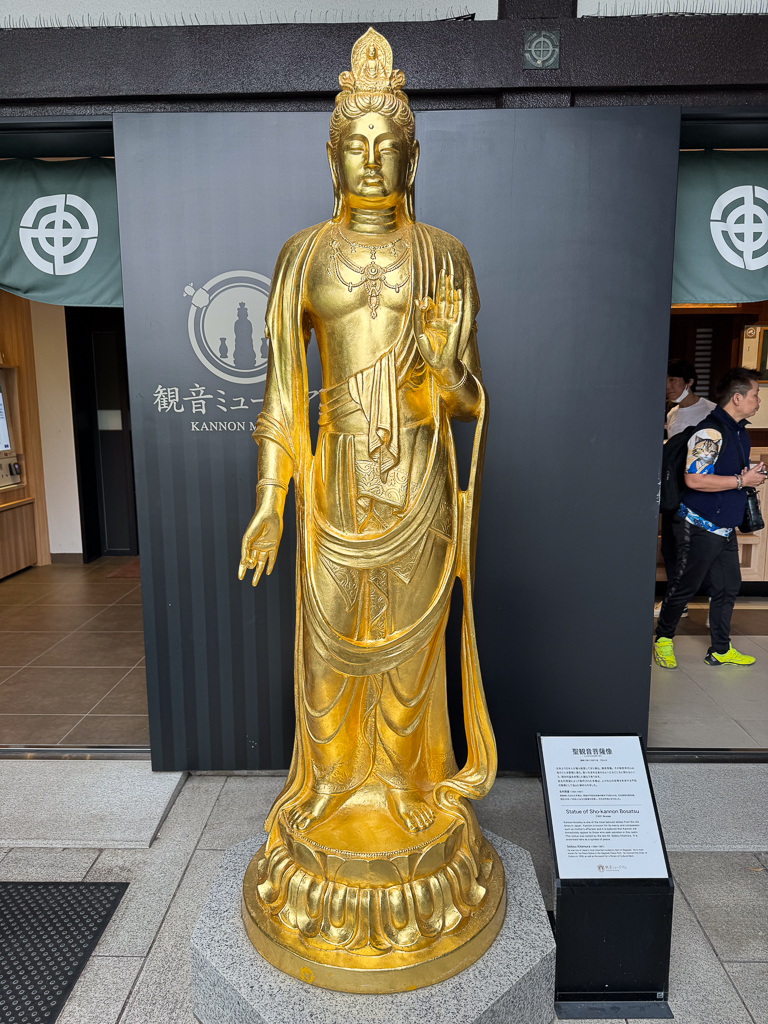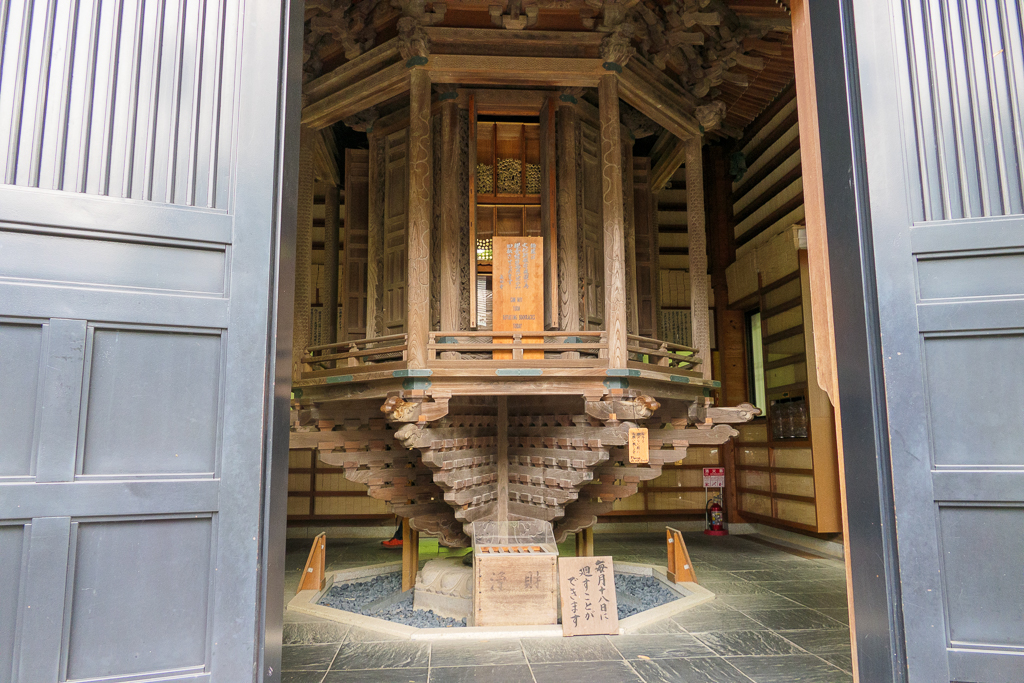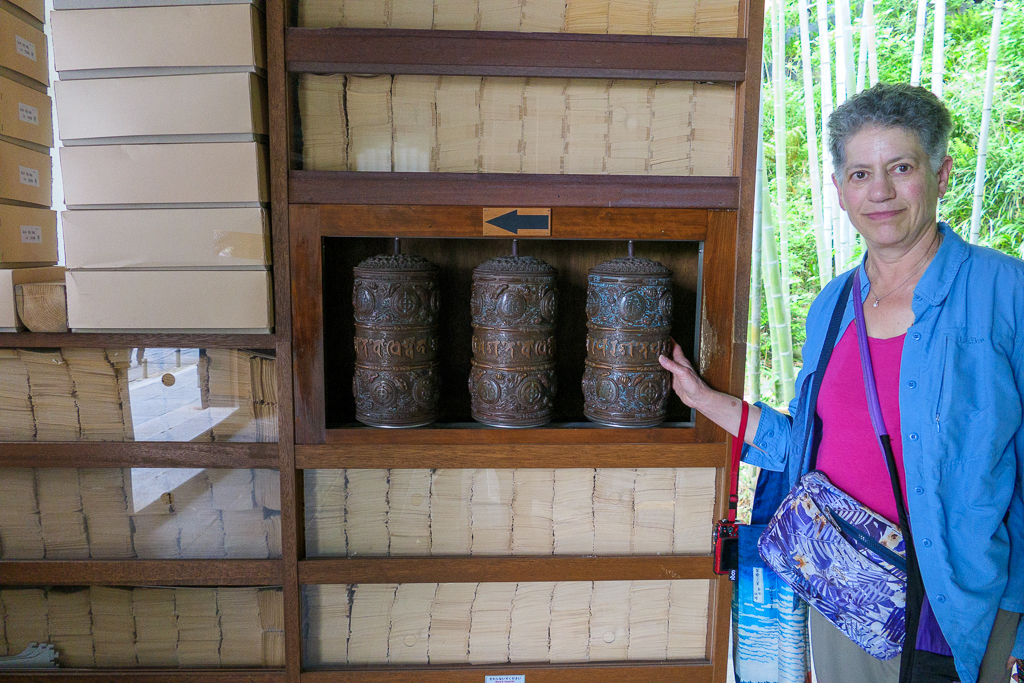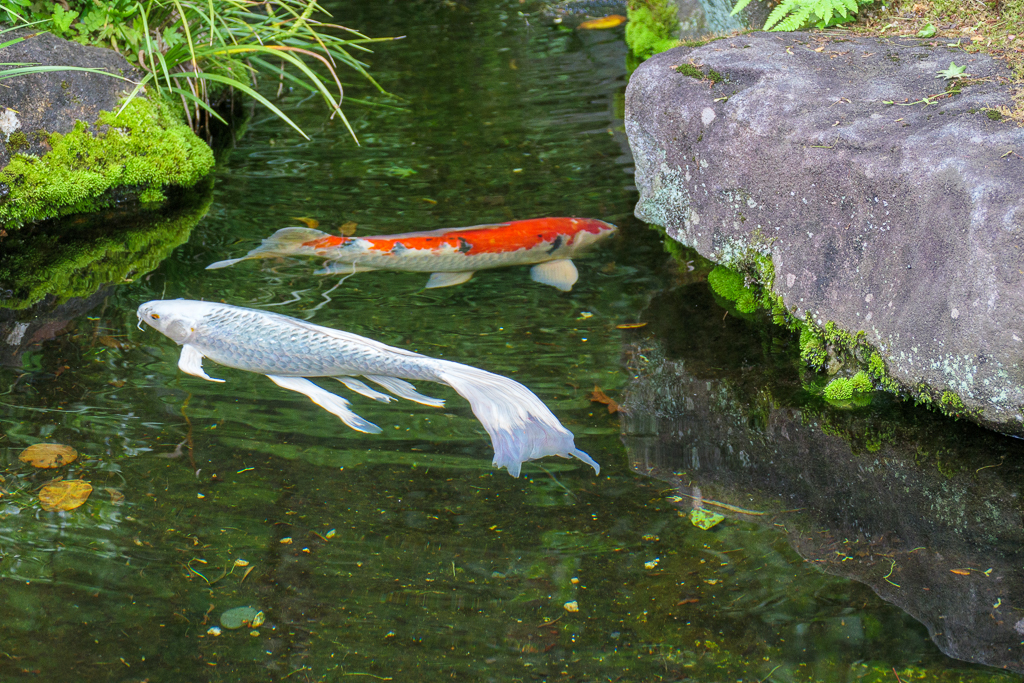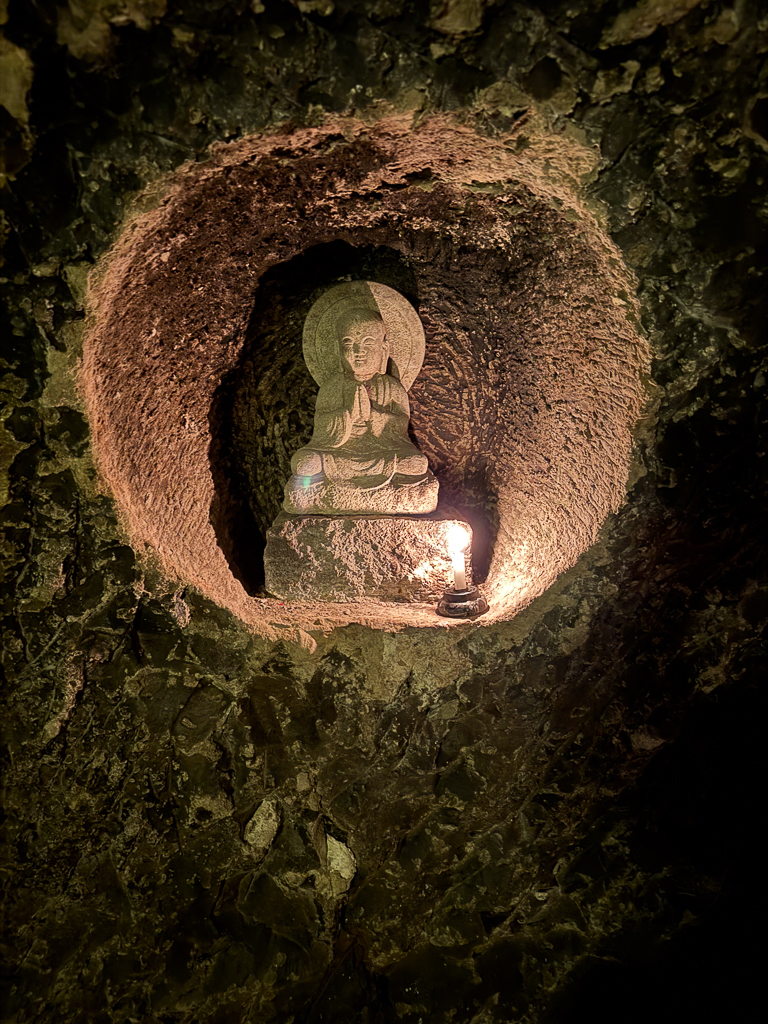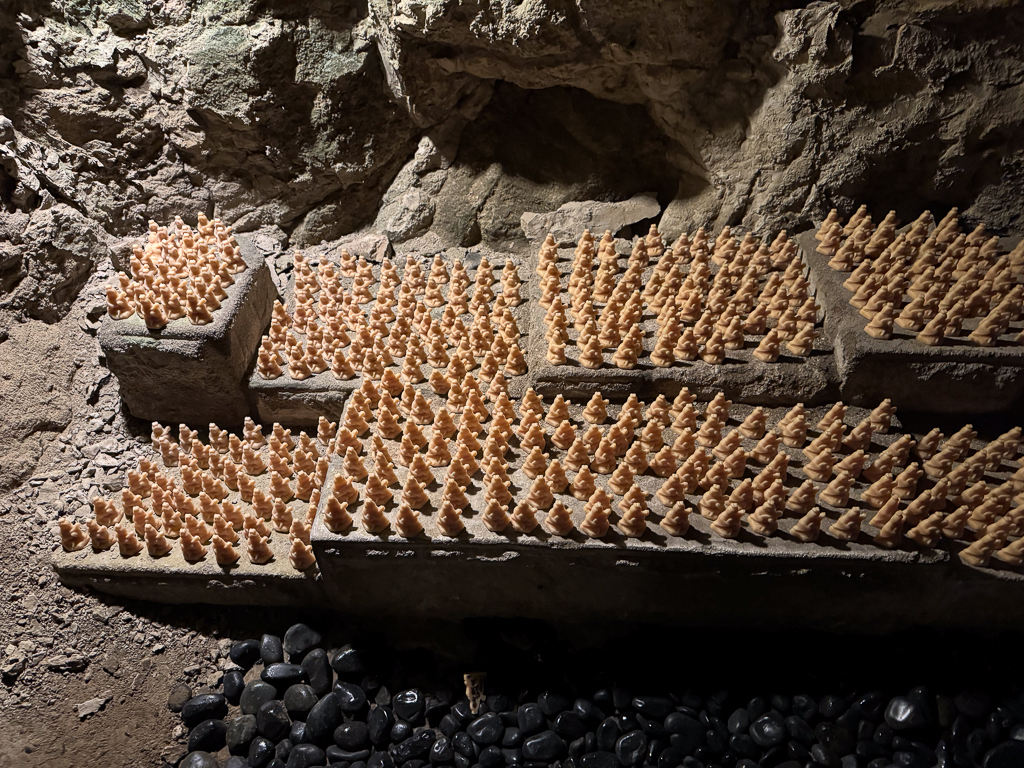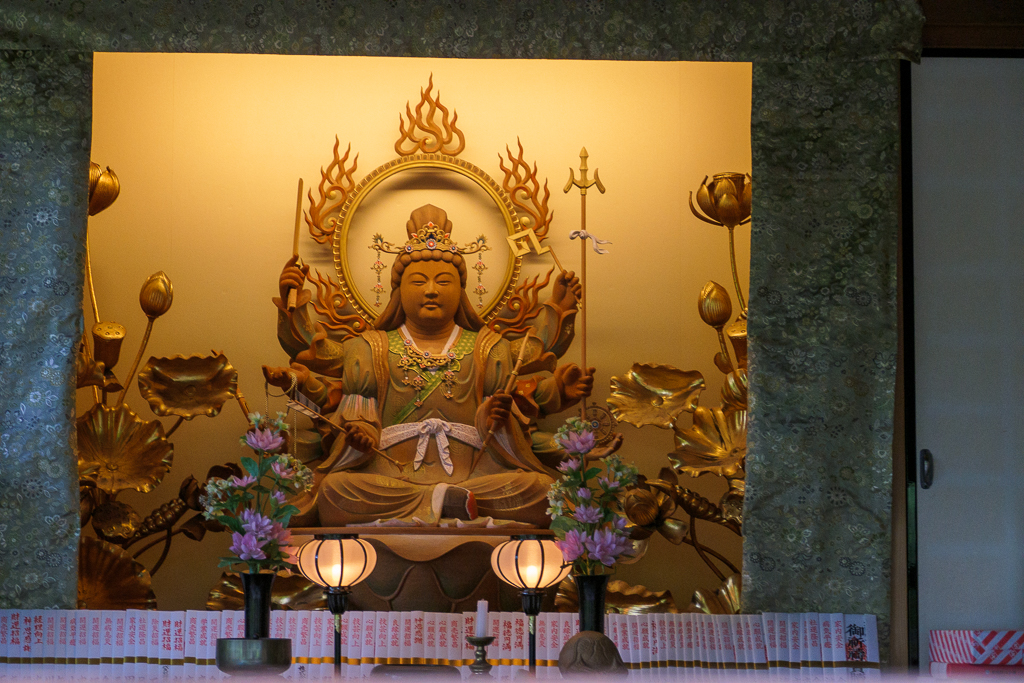Our plan today was to see the two places from Yulia’s tour yesterday that we weren’t able to visit because of our late start: the Nezu Museum and Gardens and the Shinjuku Gyoen National Gardens. Spoiler alert: we succeeded, but not without some bonus adventures.
We started by scouting out the elevators at the Daimon Station to see if we could get our luggage down to the track level when we leave on Thursday and take trains to Narita instead of the Limousine Bus – it looks hopeful. Then we headed through the fare gates and got on the train – easy peasy. But neither of us could get through the gate at Aoyama-itchome Station! Apparently our taps hadn’t registered properly at our origin station. It must happen frequently, because an English-speaking employee appeared within seconds, asked us where we’d boarded the train, and charged us for the segment we’d just traveled.
The Nezu Museum is an outgrown of its founder’s collection of pre-modern Japanese and East Asian art; it’s housed on the property that had been his family residence. They hold seven National Treasures in their collection; right now, they have a special exhibition of Japanese Art and Design centered on one of them, the Irises Screens by Ogata Kōrin, which took up two of the six galleries. The screens and other art on exhibit were wonderful…but they don’t allow photography in the galleries, just in the entrance hall and the gardens. The entrance hall features a collection of Buddha statues, like this one from the 6th Century from the Northern Qi Dynasty in China.
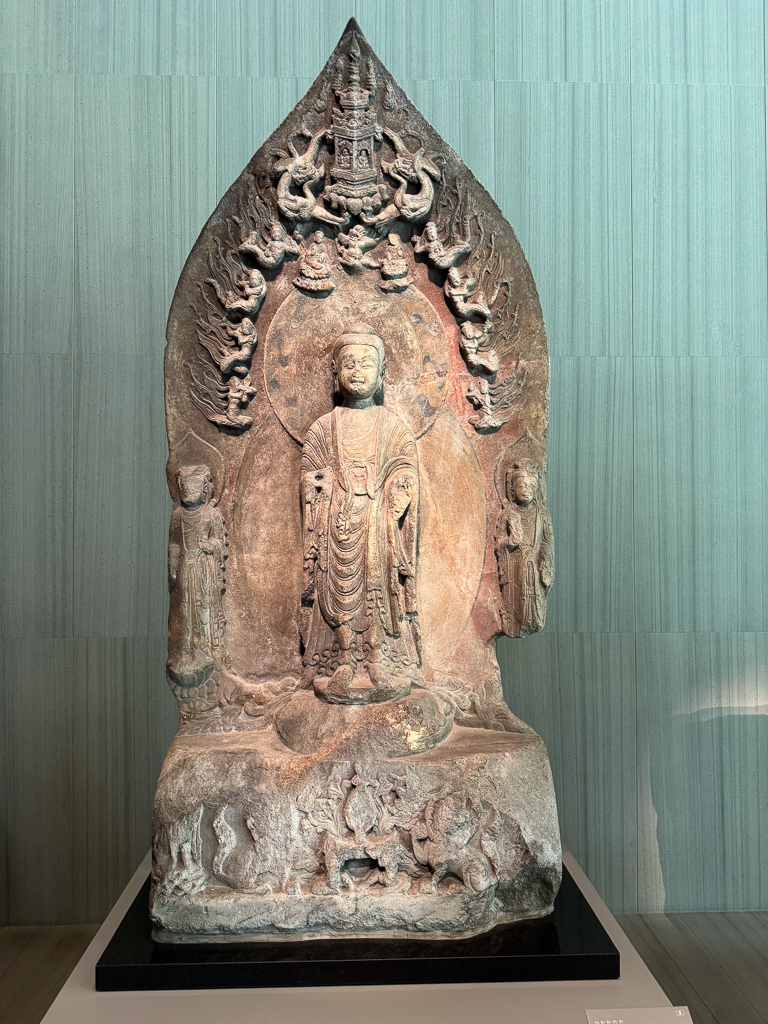
And the gardens were wonderful to walk around. There were lakes, shrines, tea houses, and irises which were in full bloom, just in time for the special exhibition.
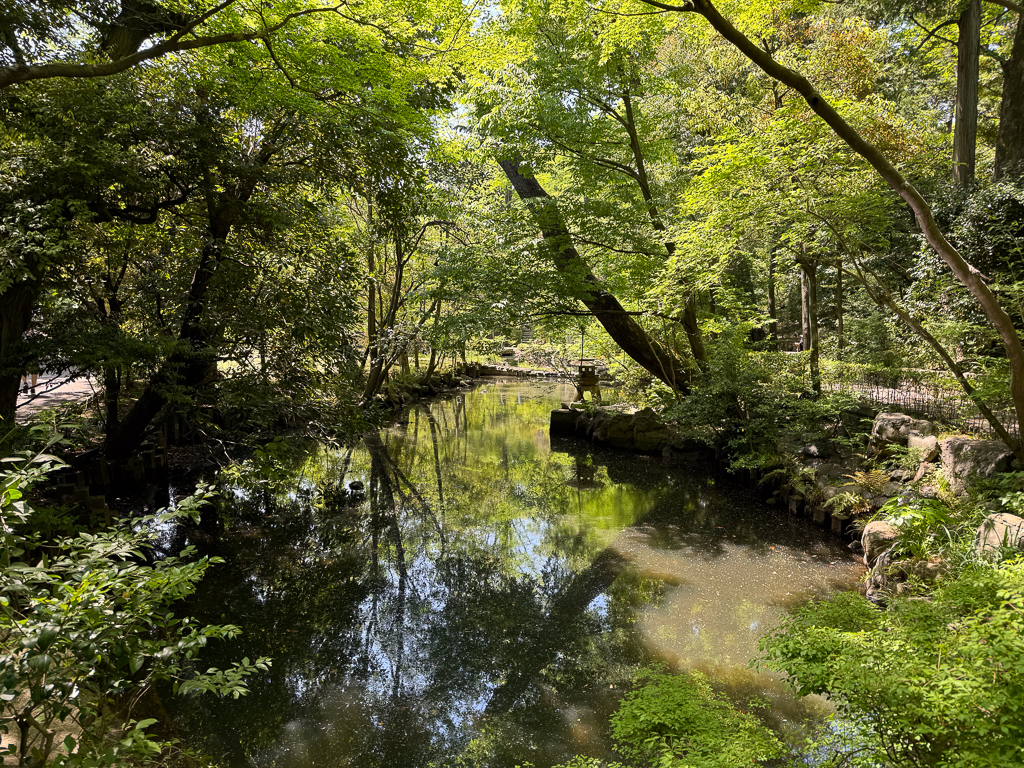
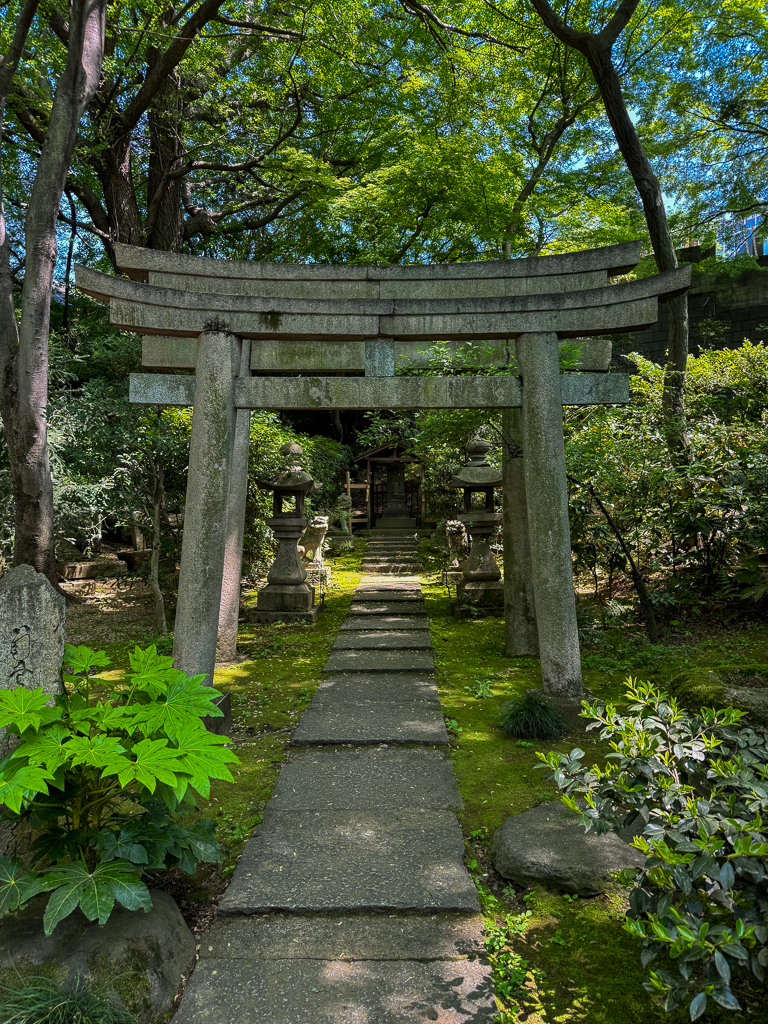
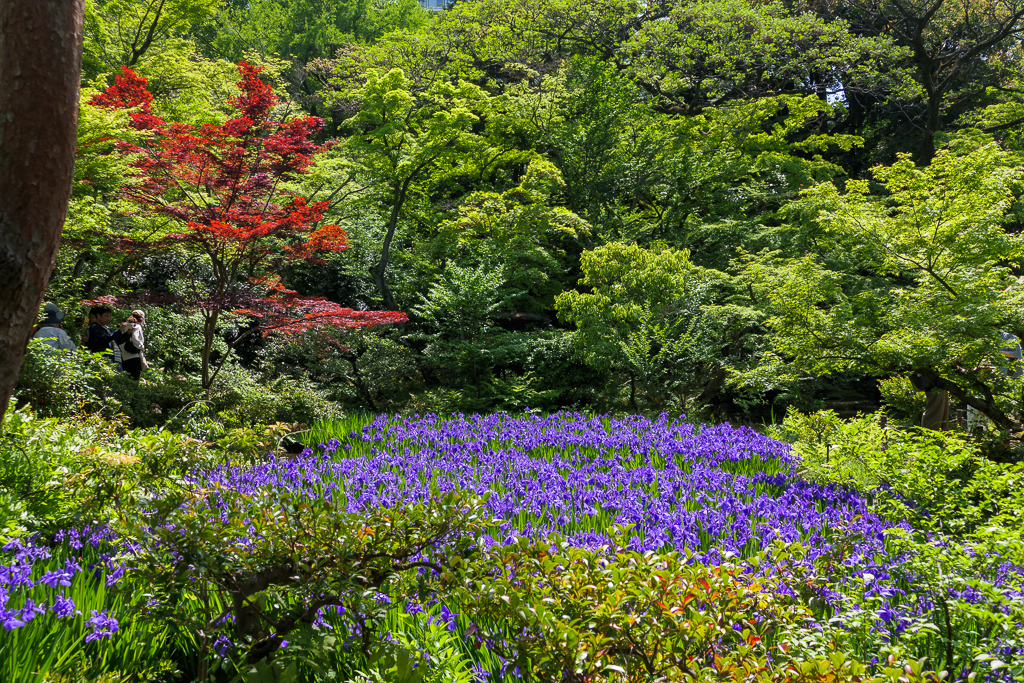
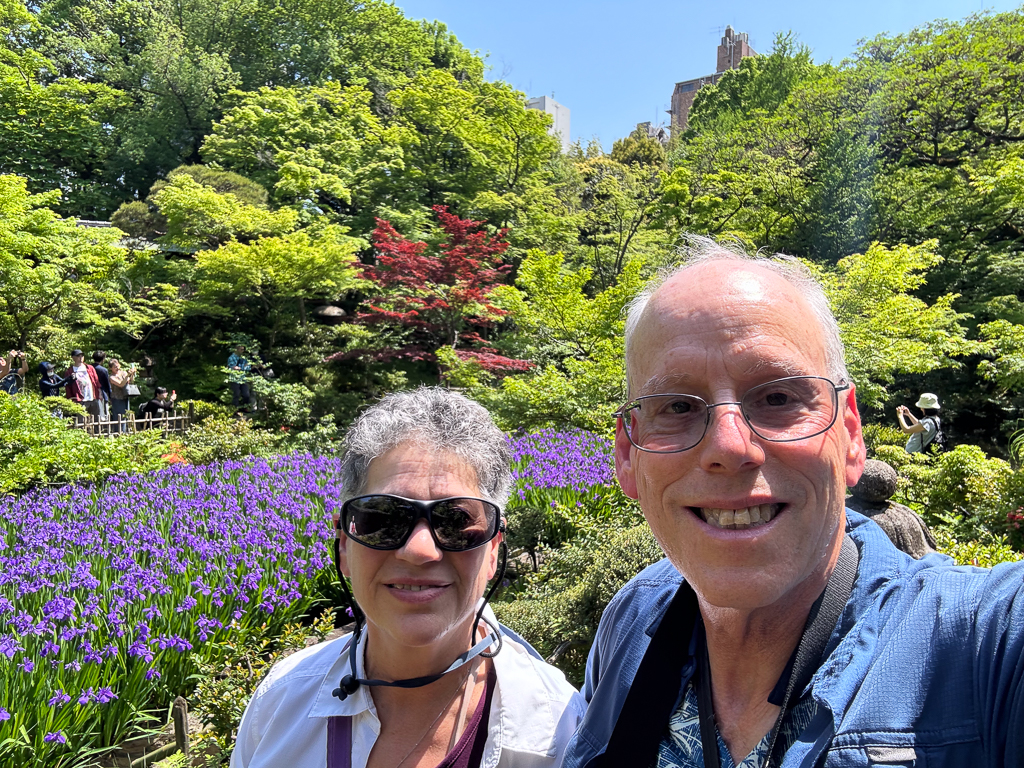
It was a wonderfully clear day – so clear that I thought we might go somewhere to see Mt. Fuji. The obvious choice was one of the skyscraper observation decks, but I had found an article on Live Japan which suggested a spot that might be less crowded. It even gave directions in perfectly clear English:
If you walk north towards Ebisu Station from Meguro Station, go towards Ebisu Garden Place and descend westward from Fujimisaka (between Meguro-ku Meguro 1-Chome and Shinagawa-ku Kamiōsaki 2-chome). There, you’ll see Mount Fuji right in front of you.
It was easy to get to Meguro Station, and easy to find Ebisu Garden Place on the map, so we set forth. And got thoroughly lost; I couldn’t find any of the other things in the description on the map, and trying to translate random street signs wasn’t any help either. Eventually, we gave up and started looking for a restaurant – that was much easier, especially with Yelp’s help. Local India Ebisu looked plausible and wasn’t hard to get to, so we gave them a try. They were a great choice – English menus, a waiter who was happy to speak English with us, great food (with some differences from what we’d have at an Indian place at home, like including spicy French fries), and good beer. It was just what we needed.
We gave up on Mt. Fuji and got back on the train to go to Shinjuku and the gardens. We had to stand; it’s a good thing we were holding the straps securely because we were suddenly thrown forward and nearly fell. A few seconds later, the PA came on: “The emergency brake has been applied”. Gee, thanks.
The gardens were worth the effort of getting there. They’re huge, and although there were many many people out enjoying them, they didn’t feel crowded. We visited the Traditional Japanese Garden, the Taiwan Pavillion (donated by the people of Taiwan in the 1920s in honor of Crown Prince Hirohito’s wedding – Taiwan was a Japanese colony at the time), and the Formal Garden with its roses. Even the huge NTT Docomo building just outside the gardens added to the scenery.
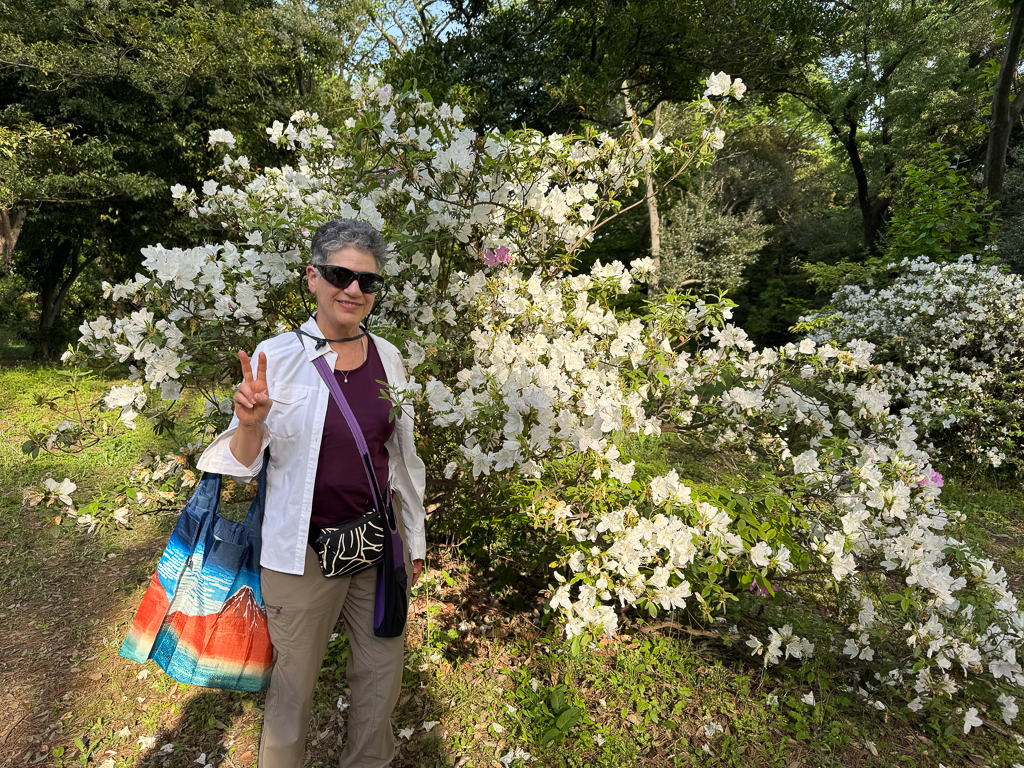
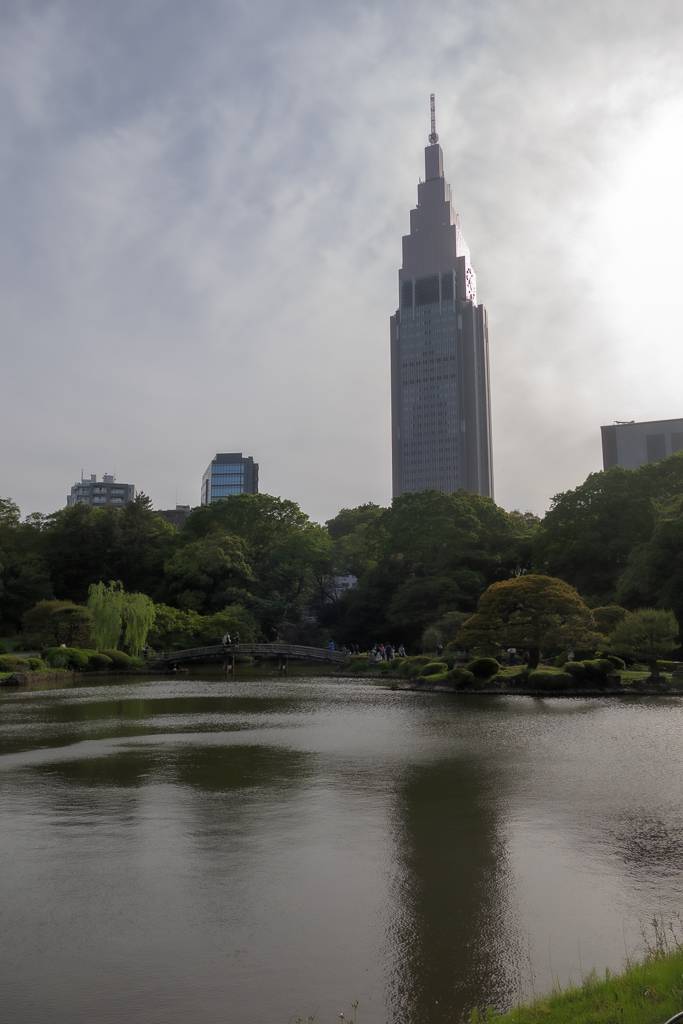
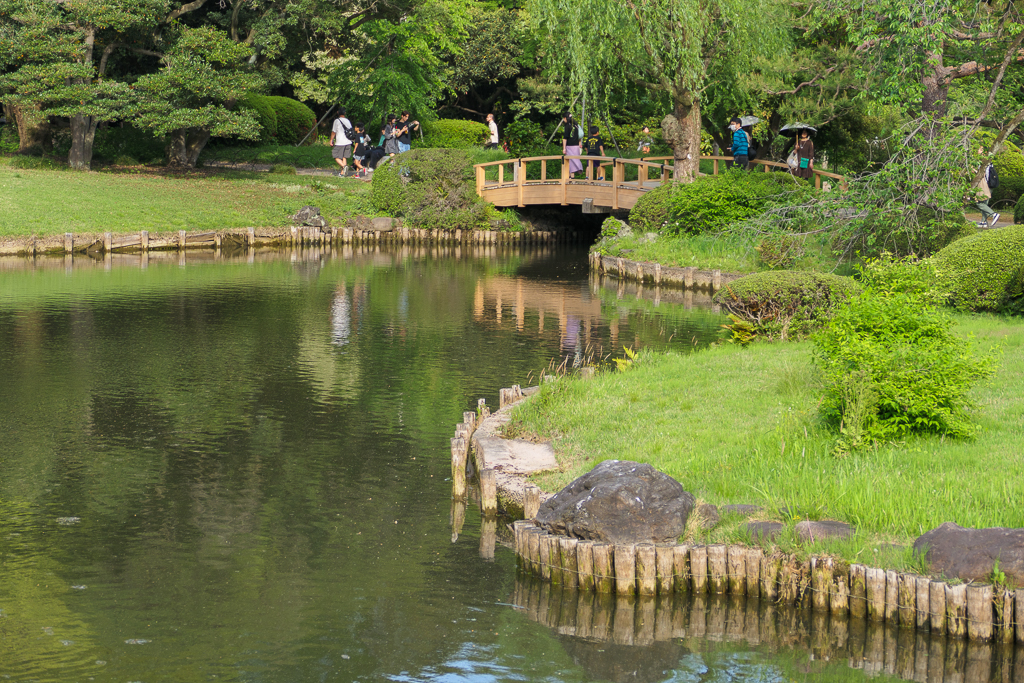
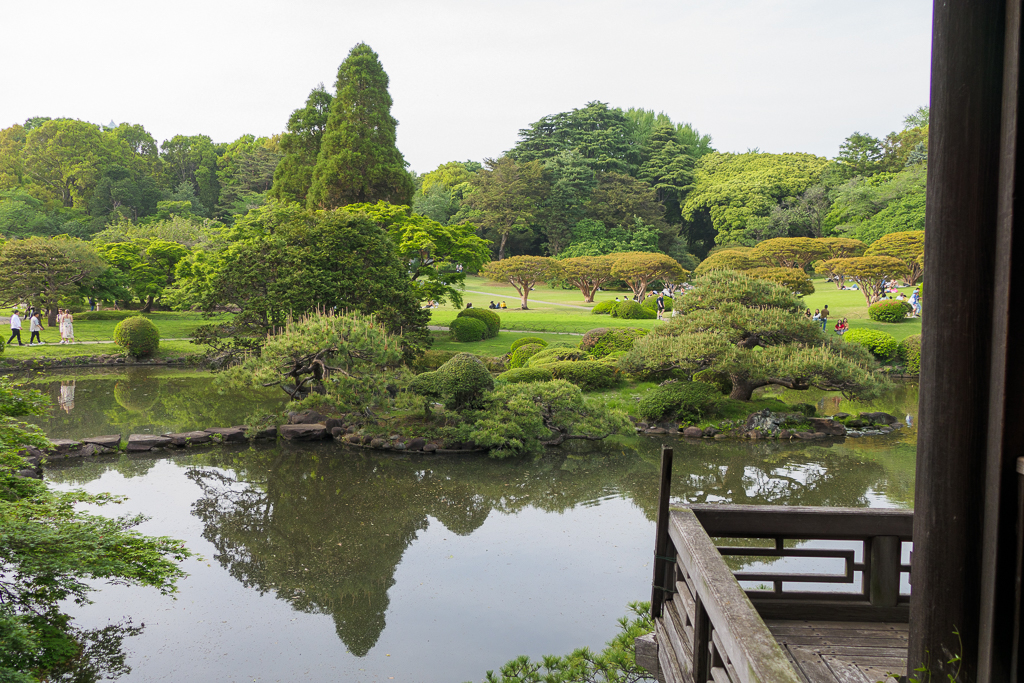
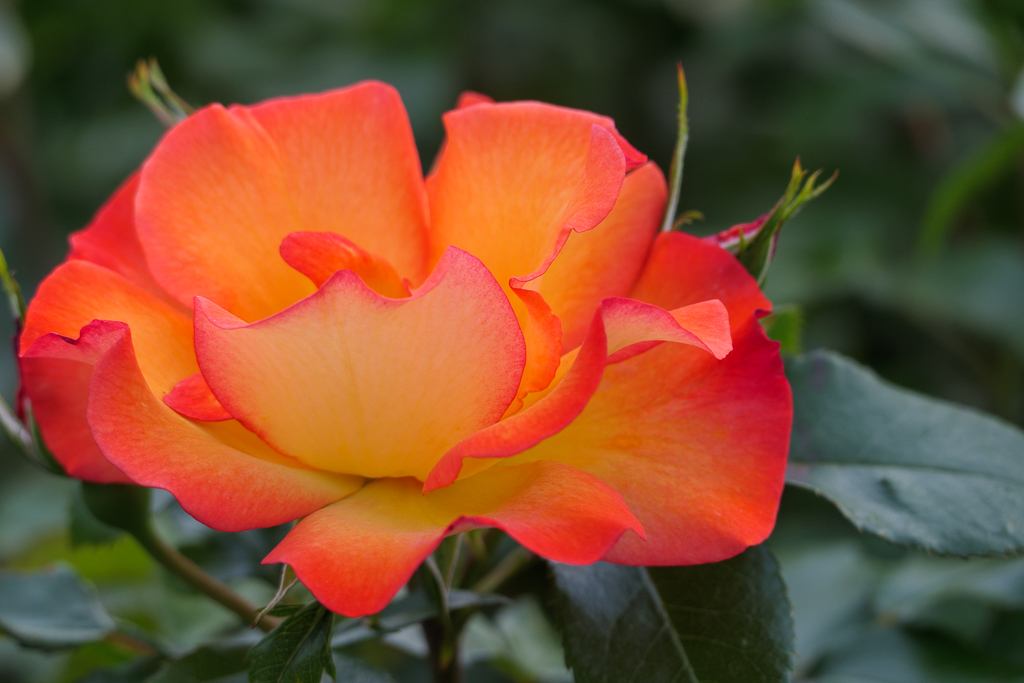
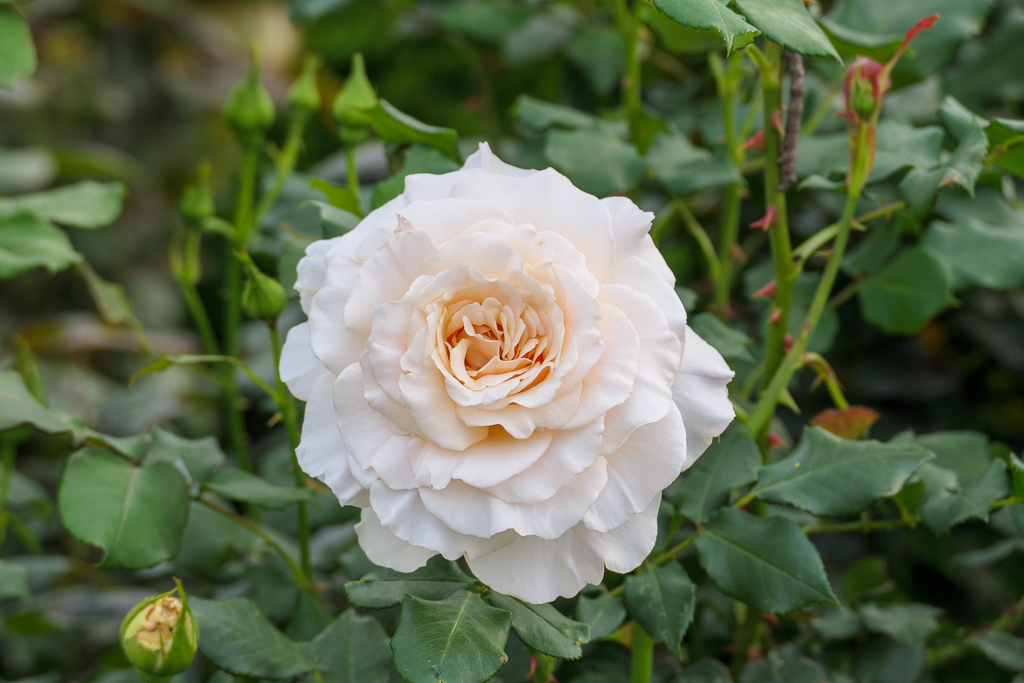
It was getting dark, but we had one more stop to make: the Shinjuku branch of Takashimaya Department Store, in search of a yukata for Diane. They have beautiful yukatas in silk, for use in proper social circles and priced accordingly; luckily, they also have “souvenir” yukatas in cotton at much more reasonable prices for tourists. :-)
I would have liked to see more of the store, especially the food halls in the basement, but we were hot and tired, so we found our way to the proper subway line and headed back to the hotel.
